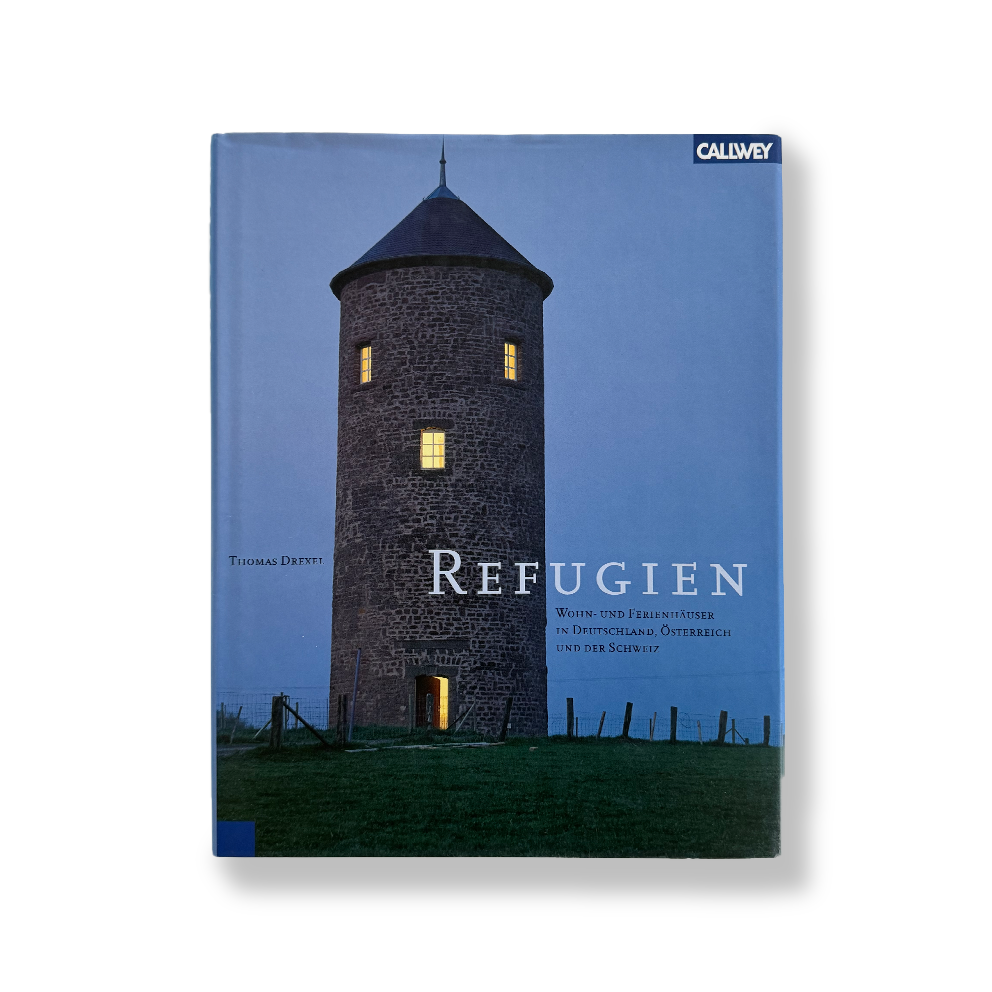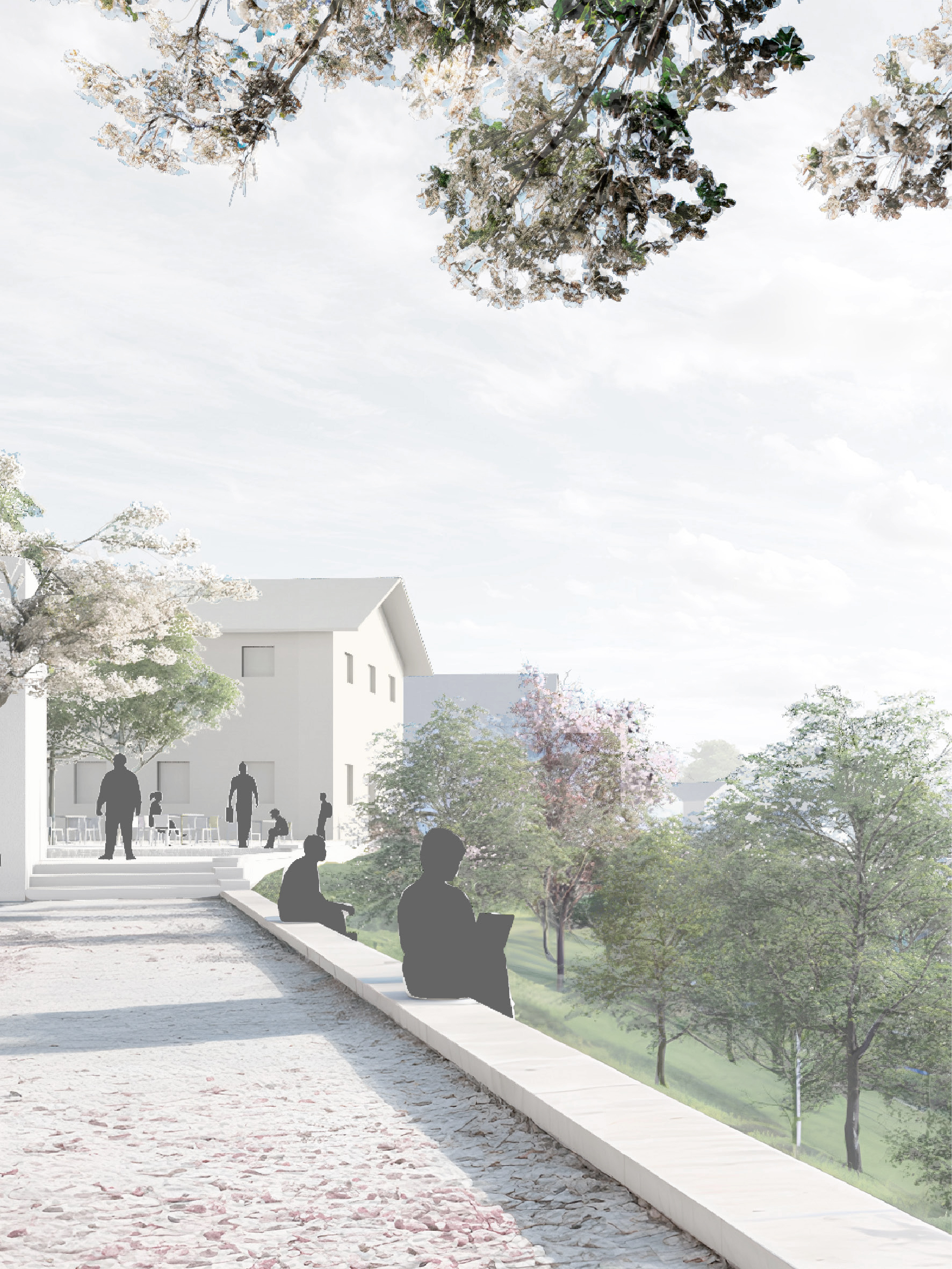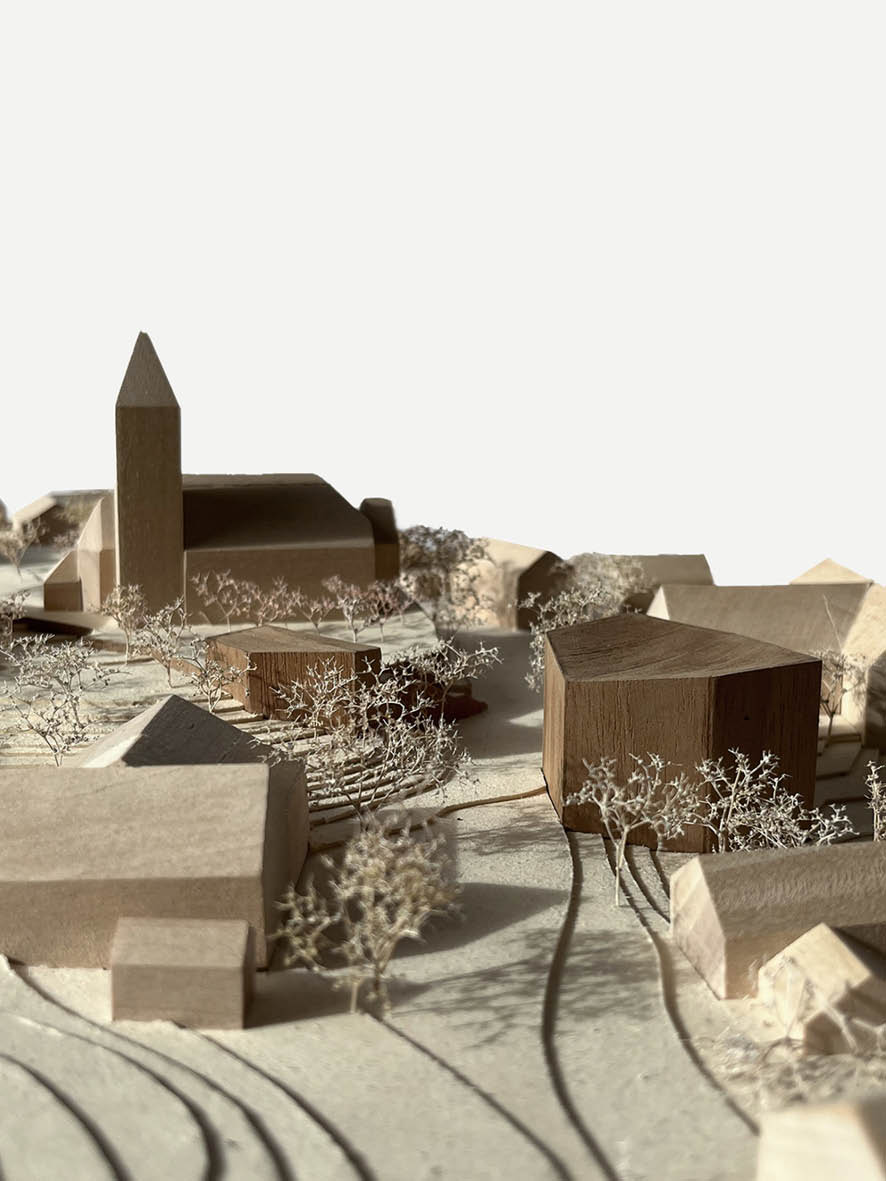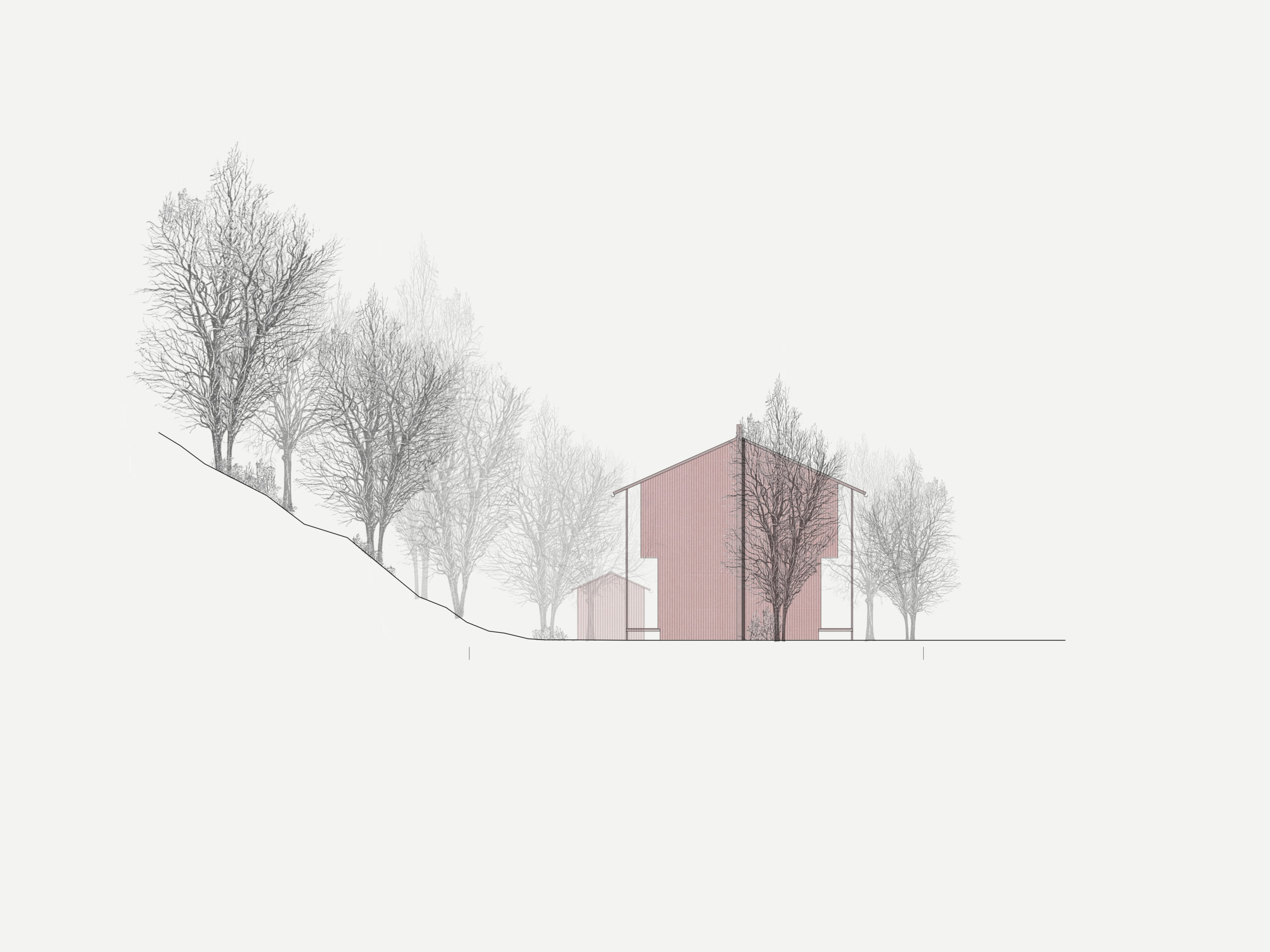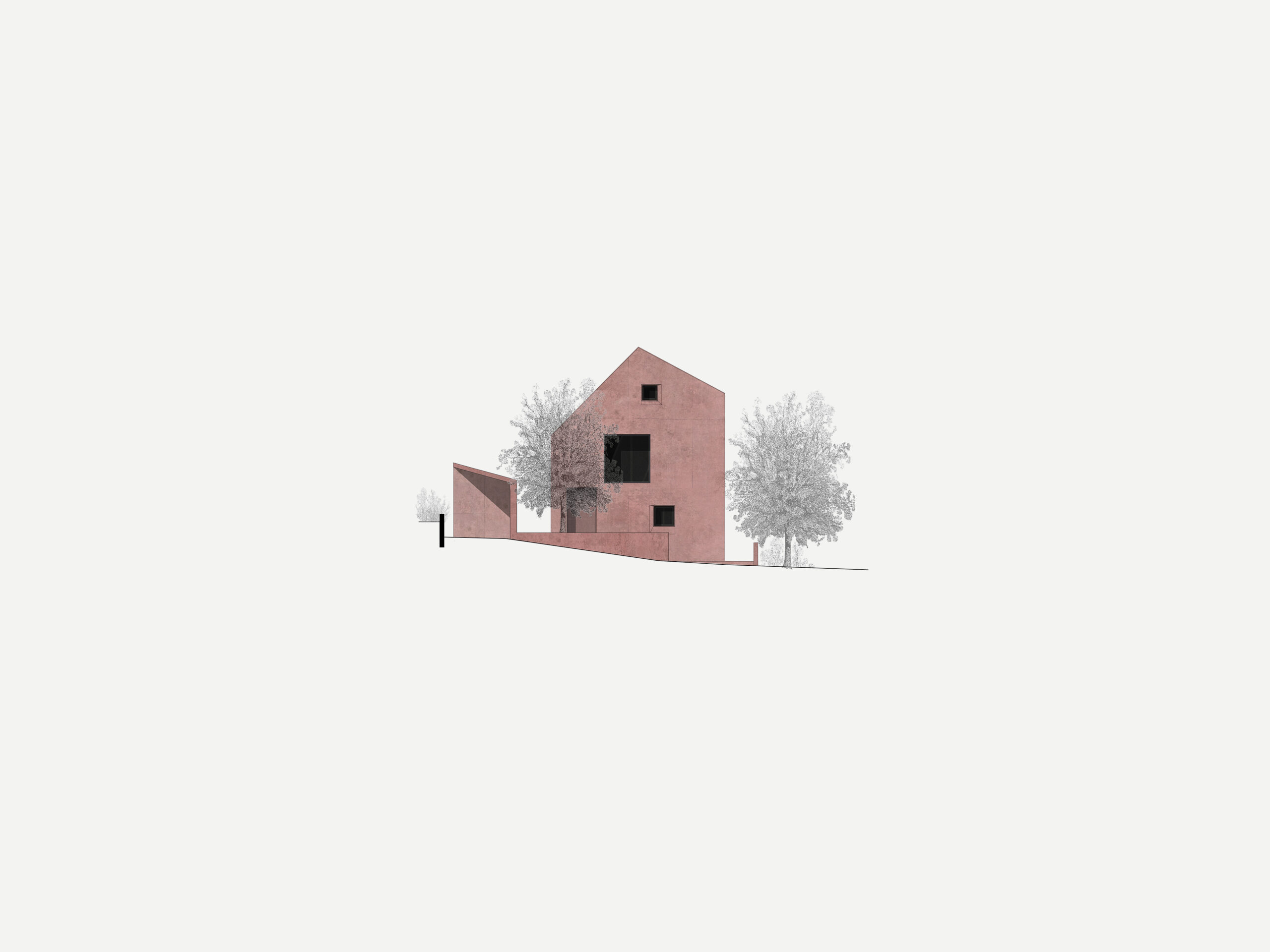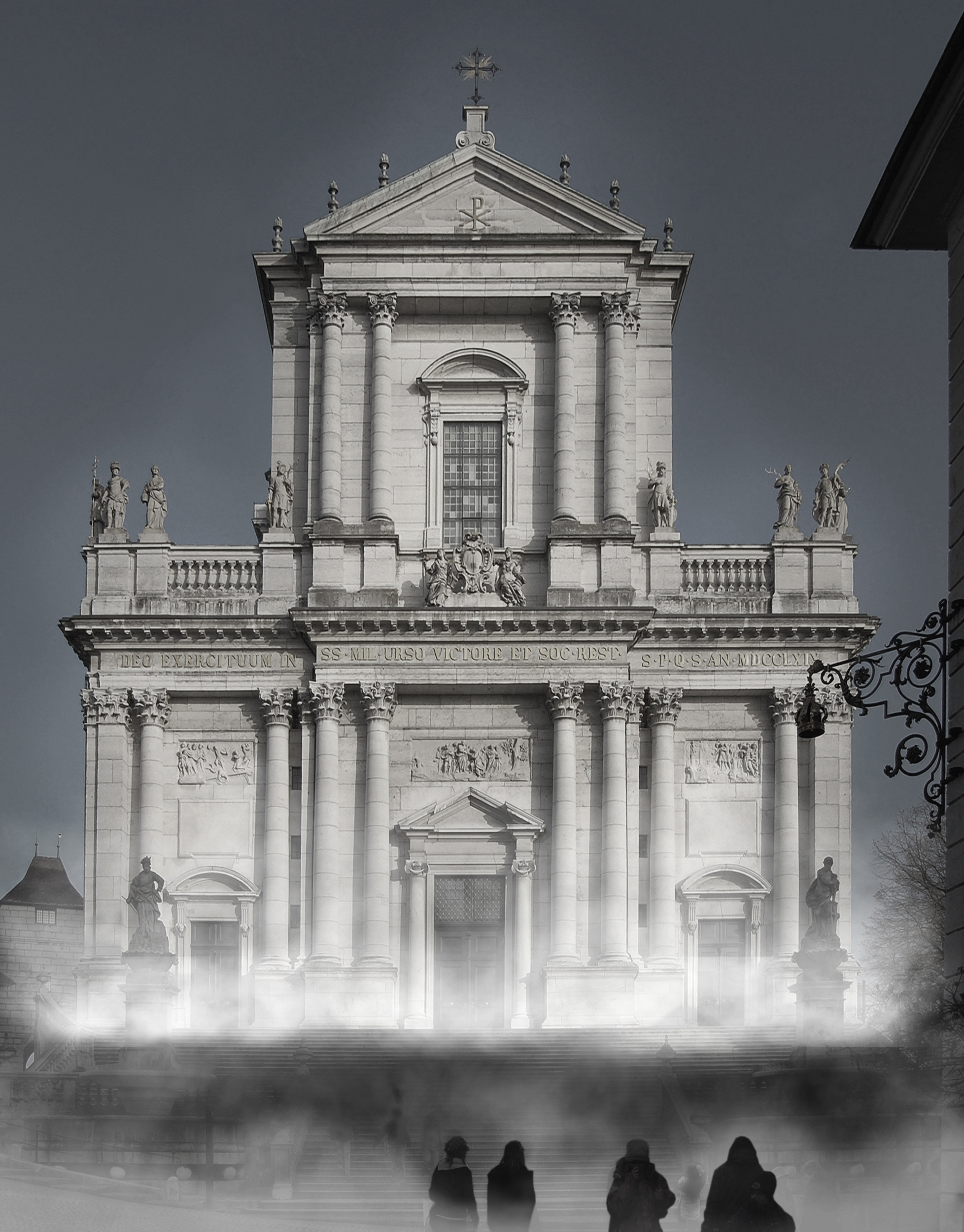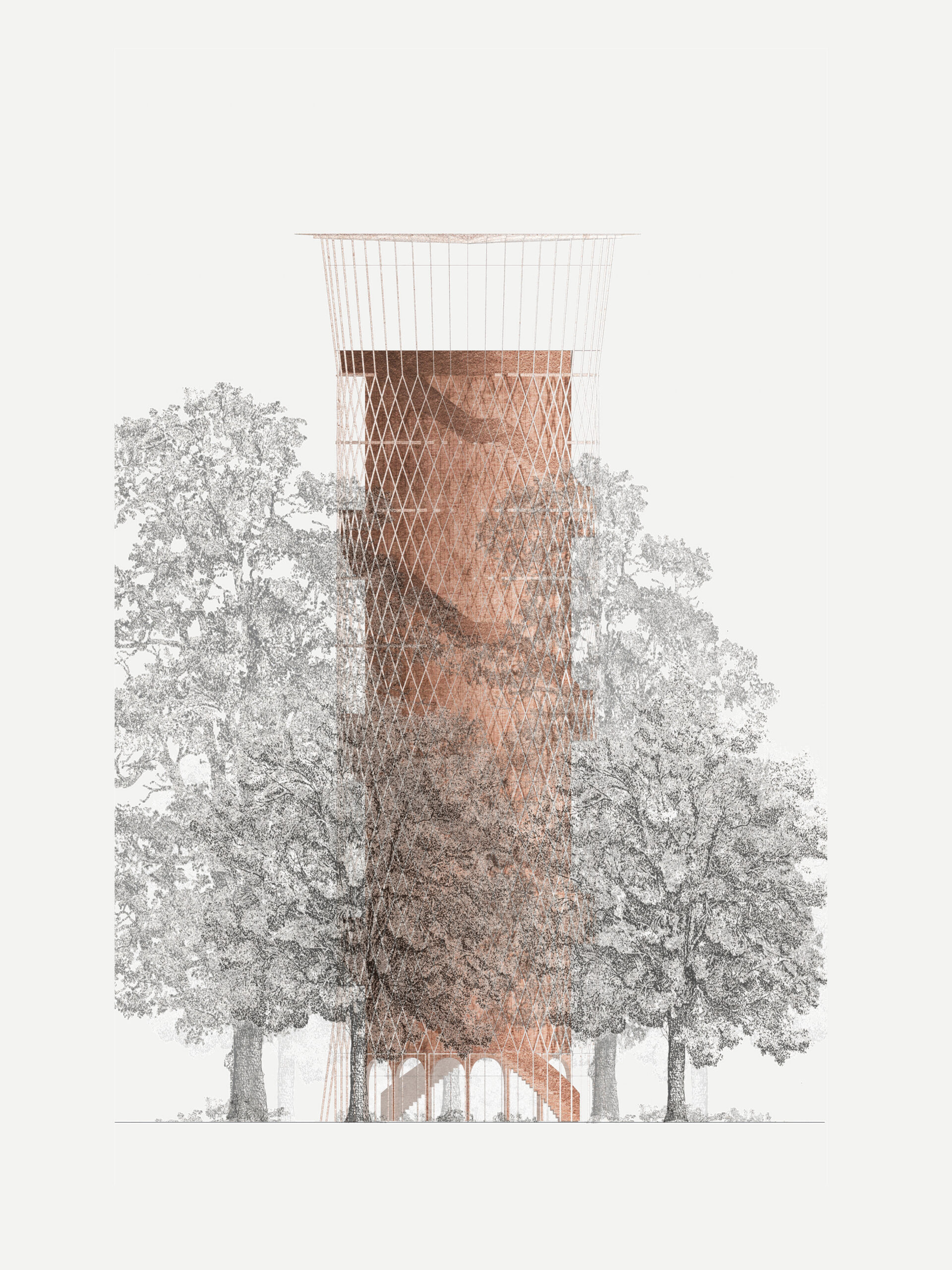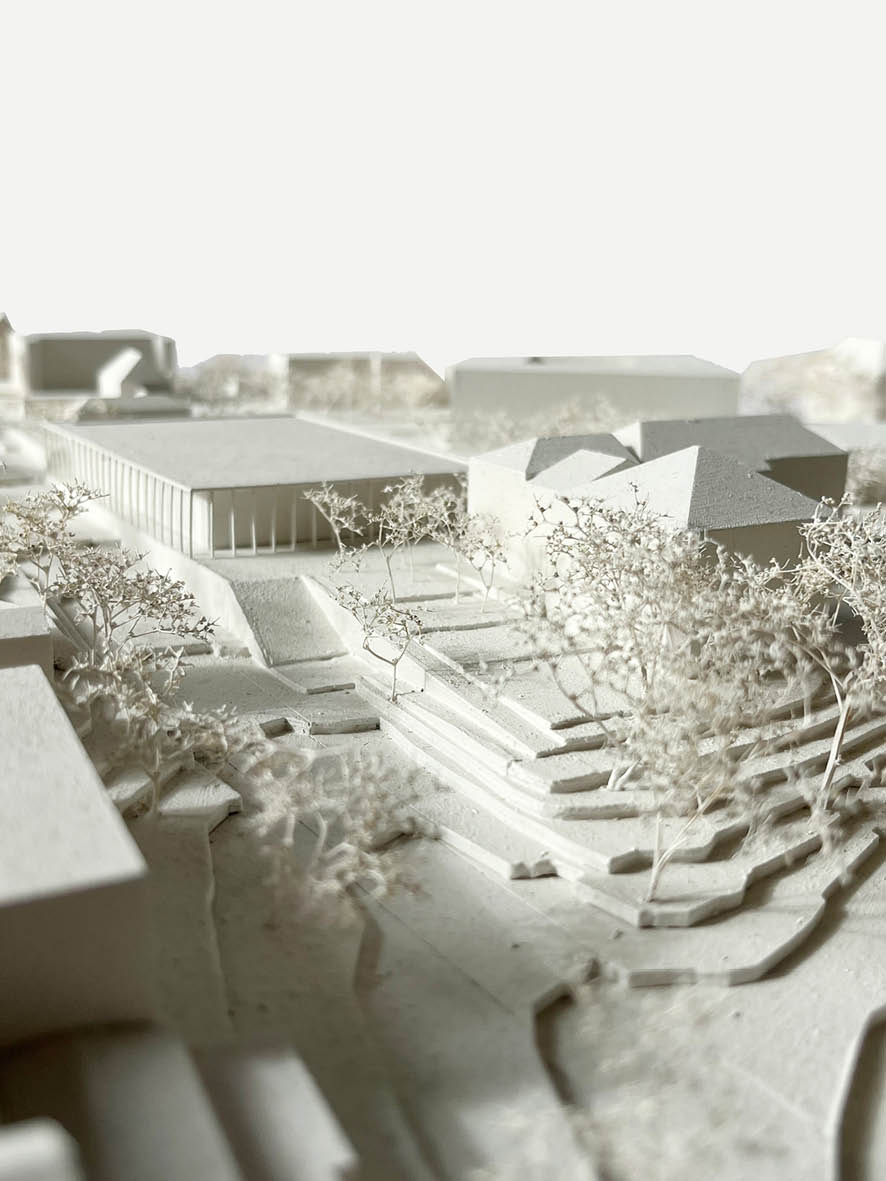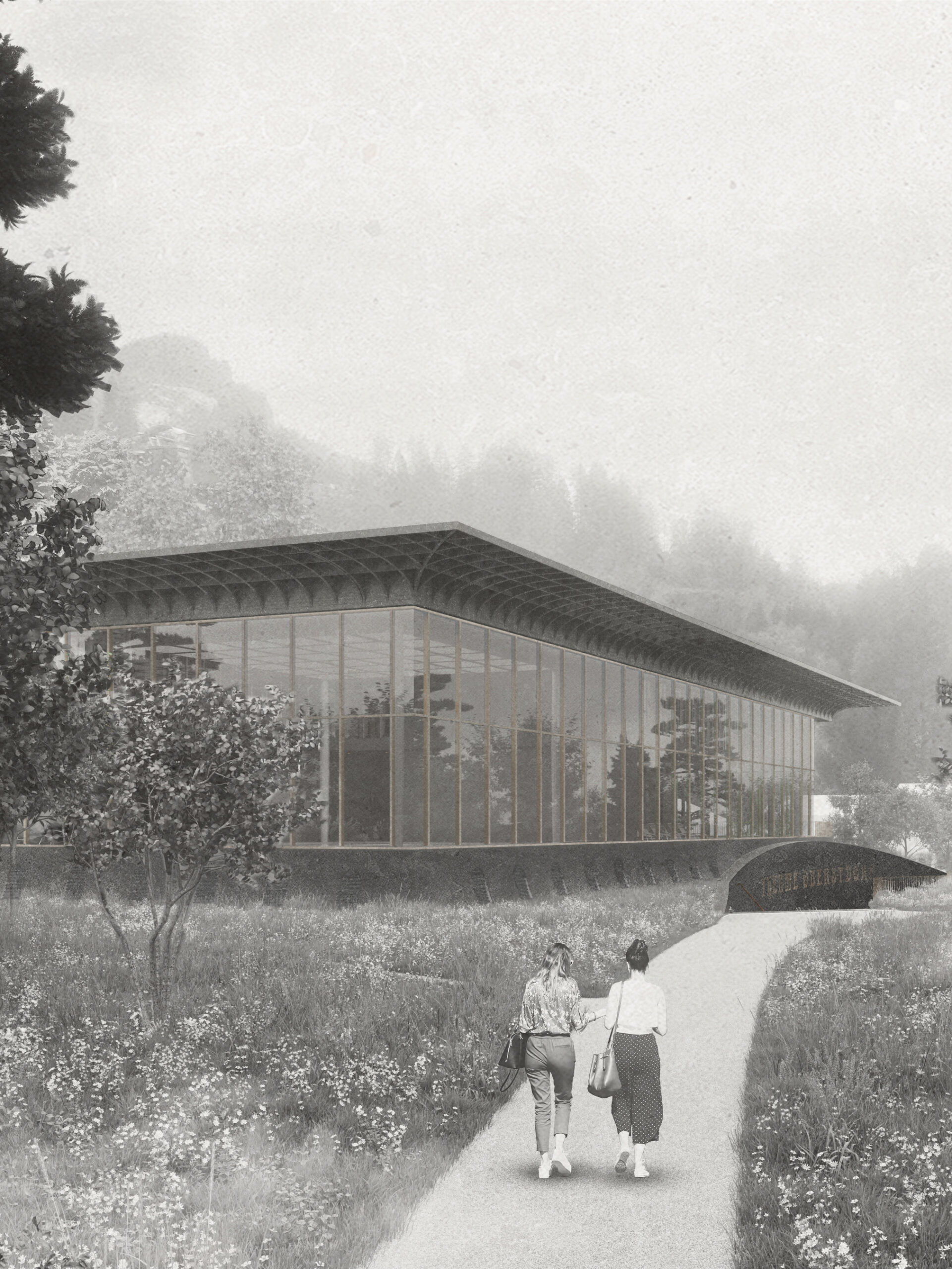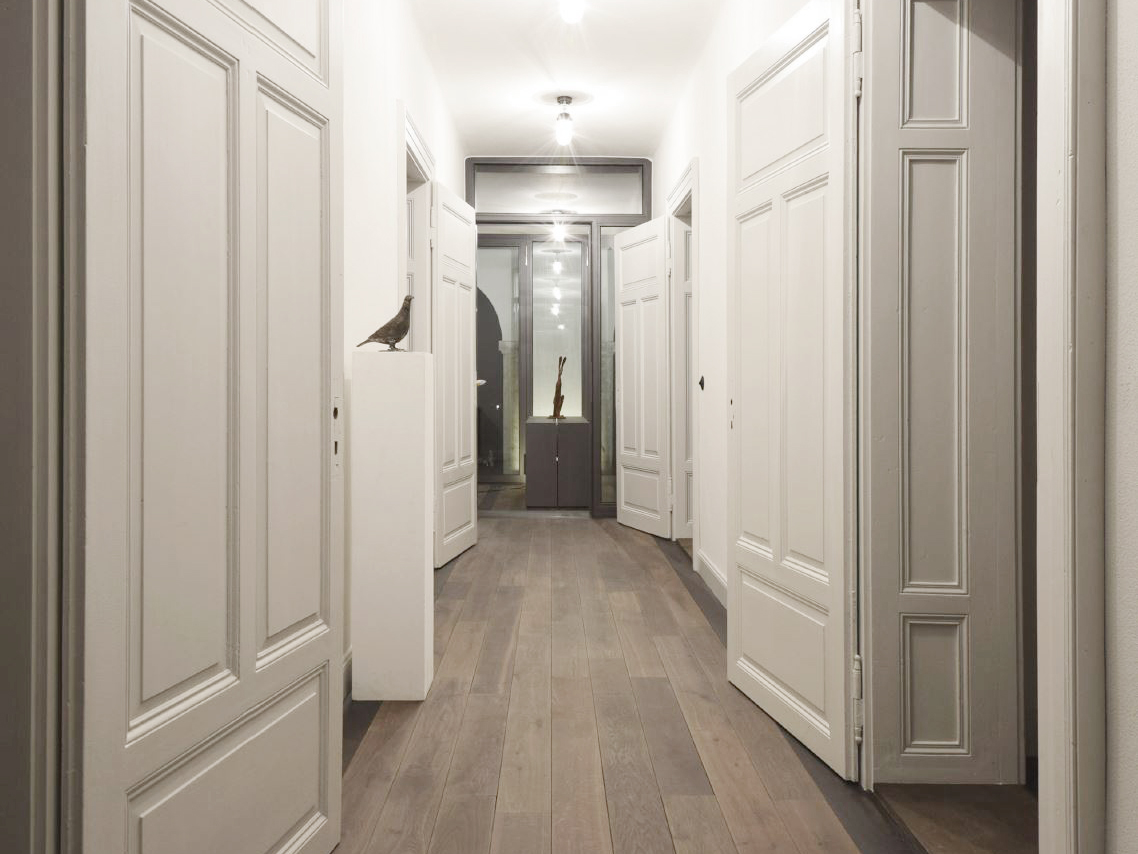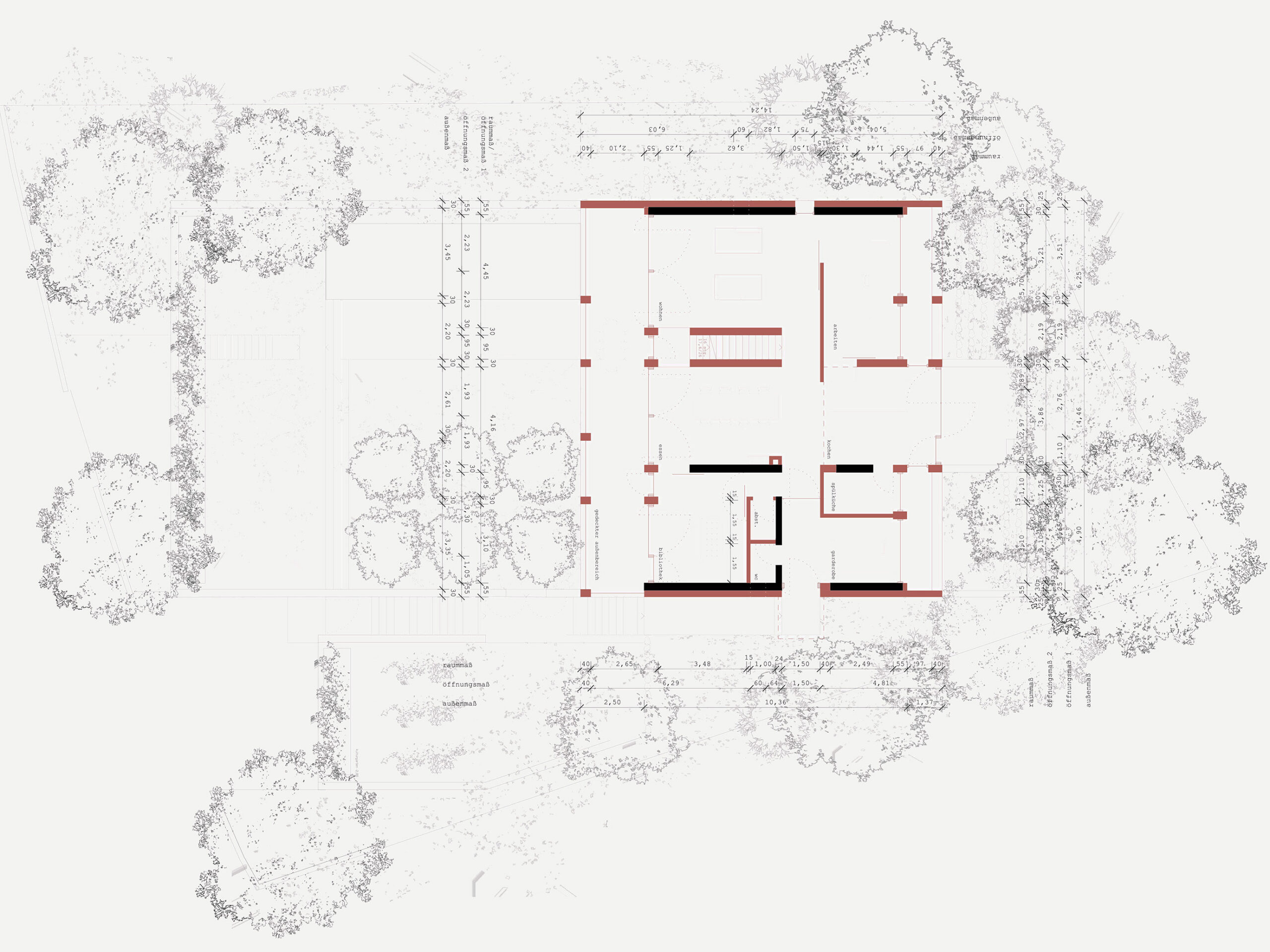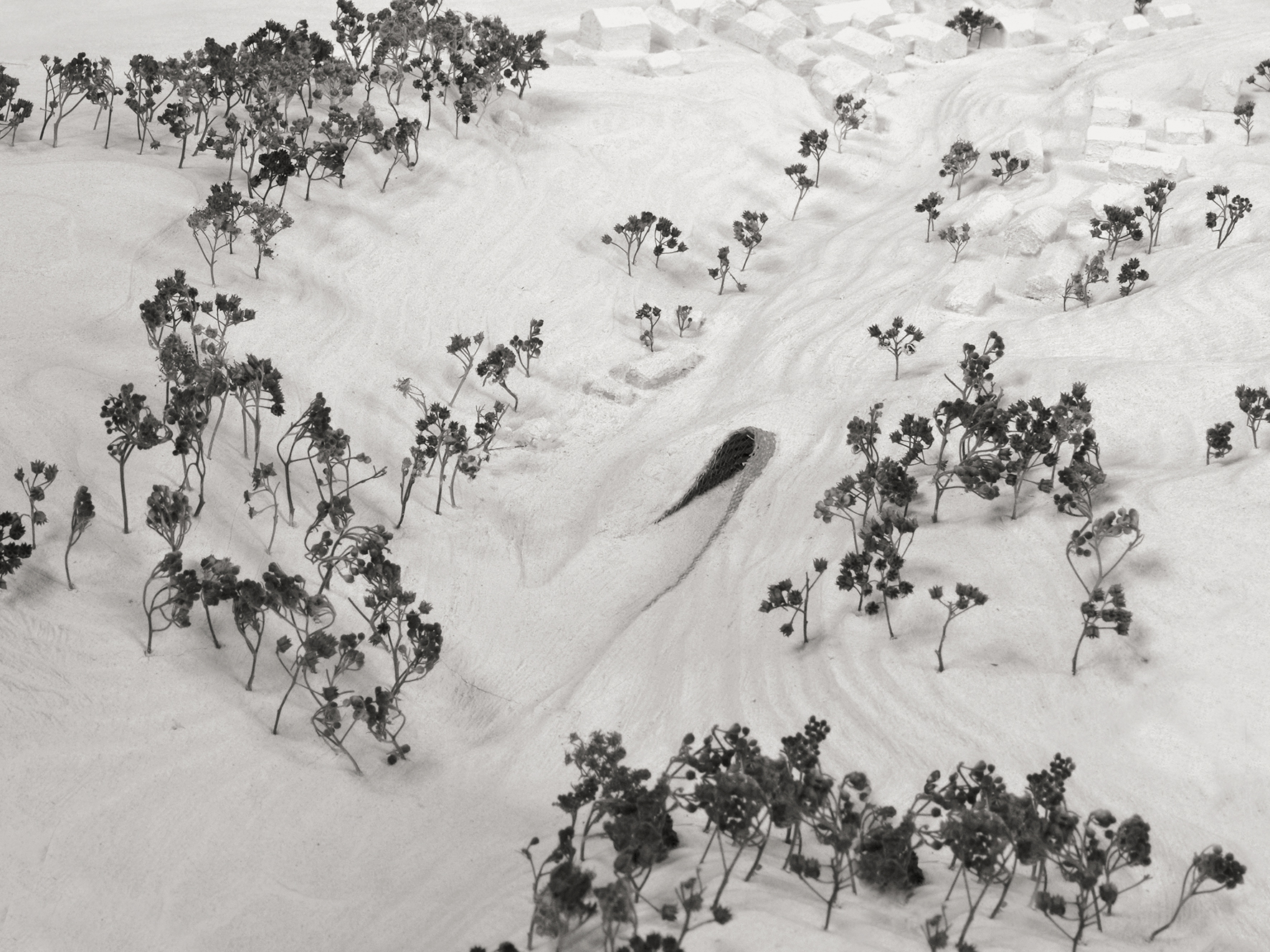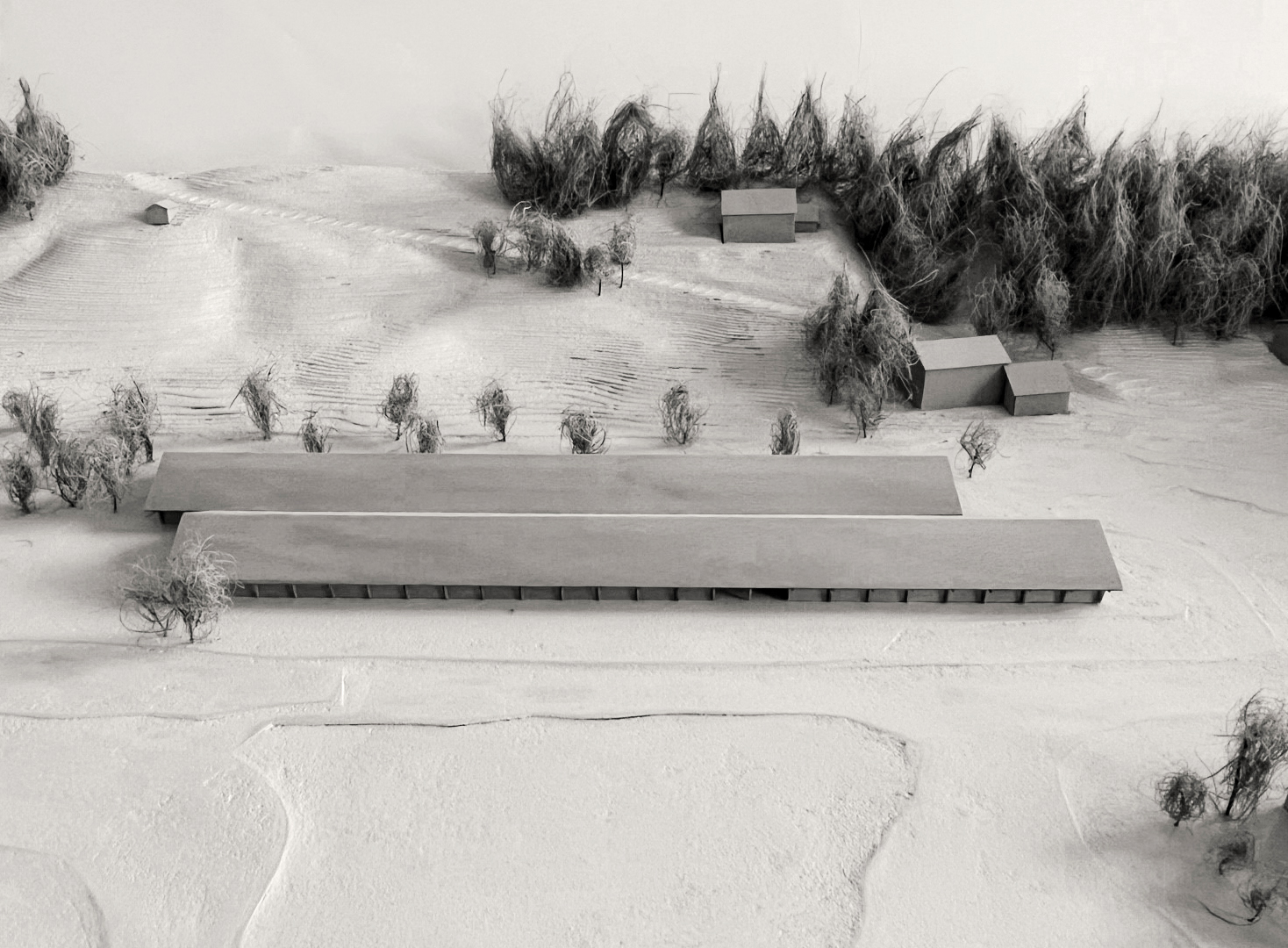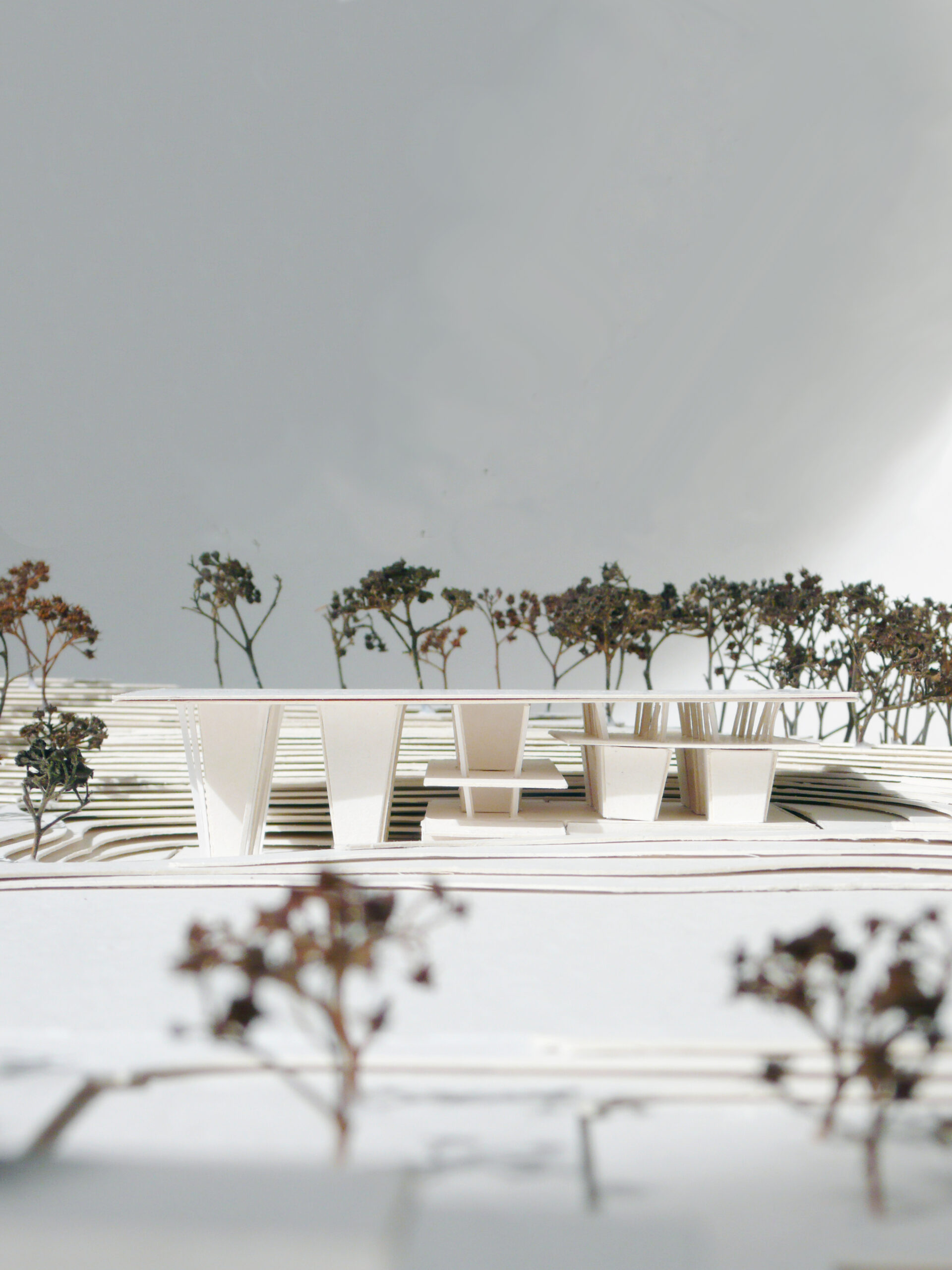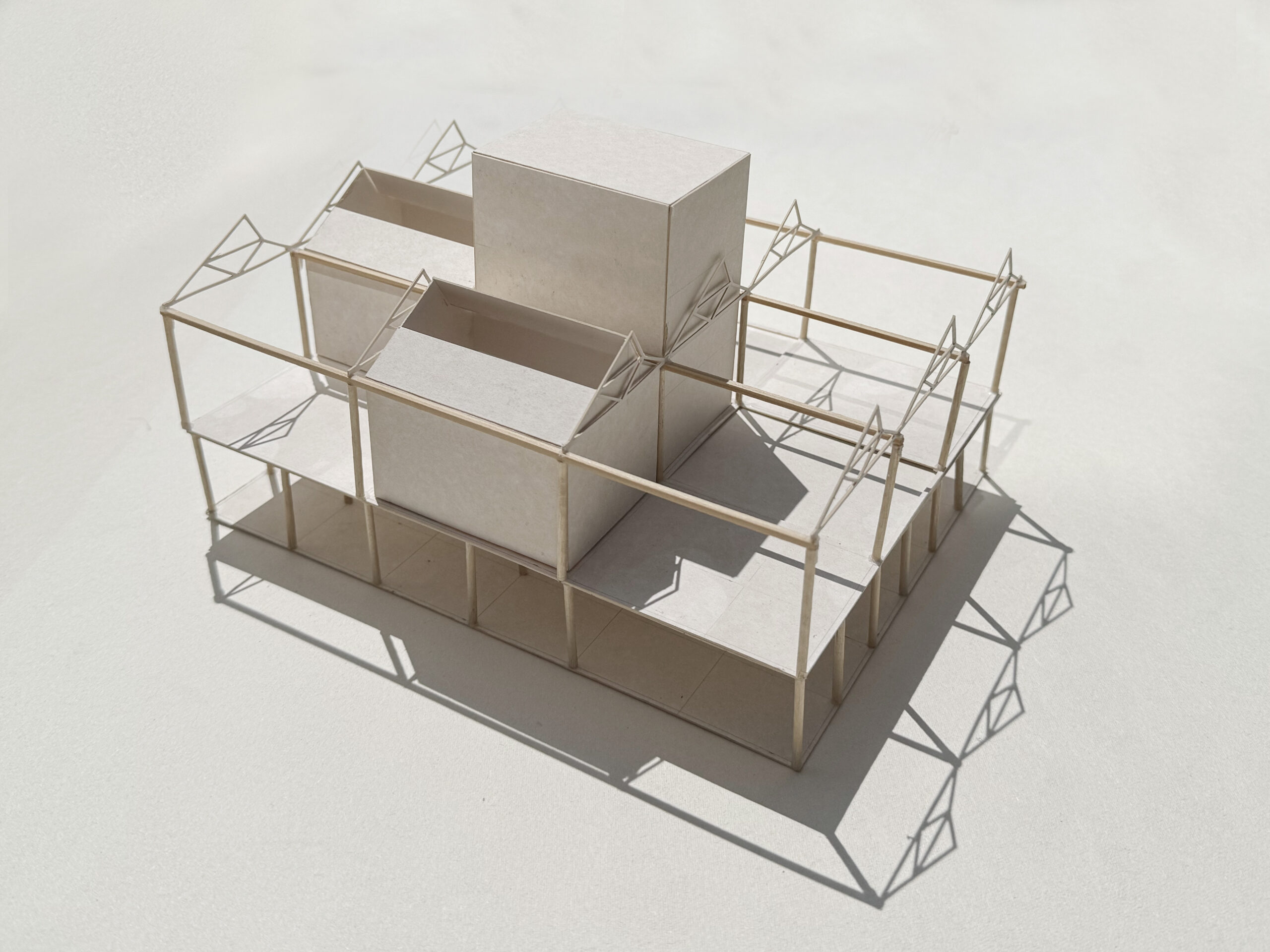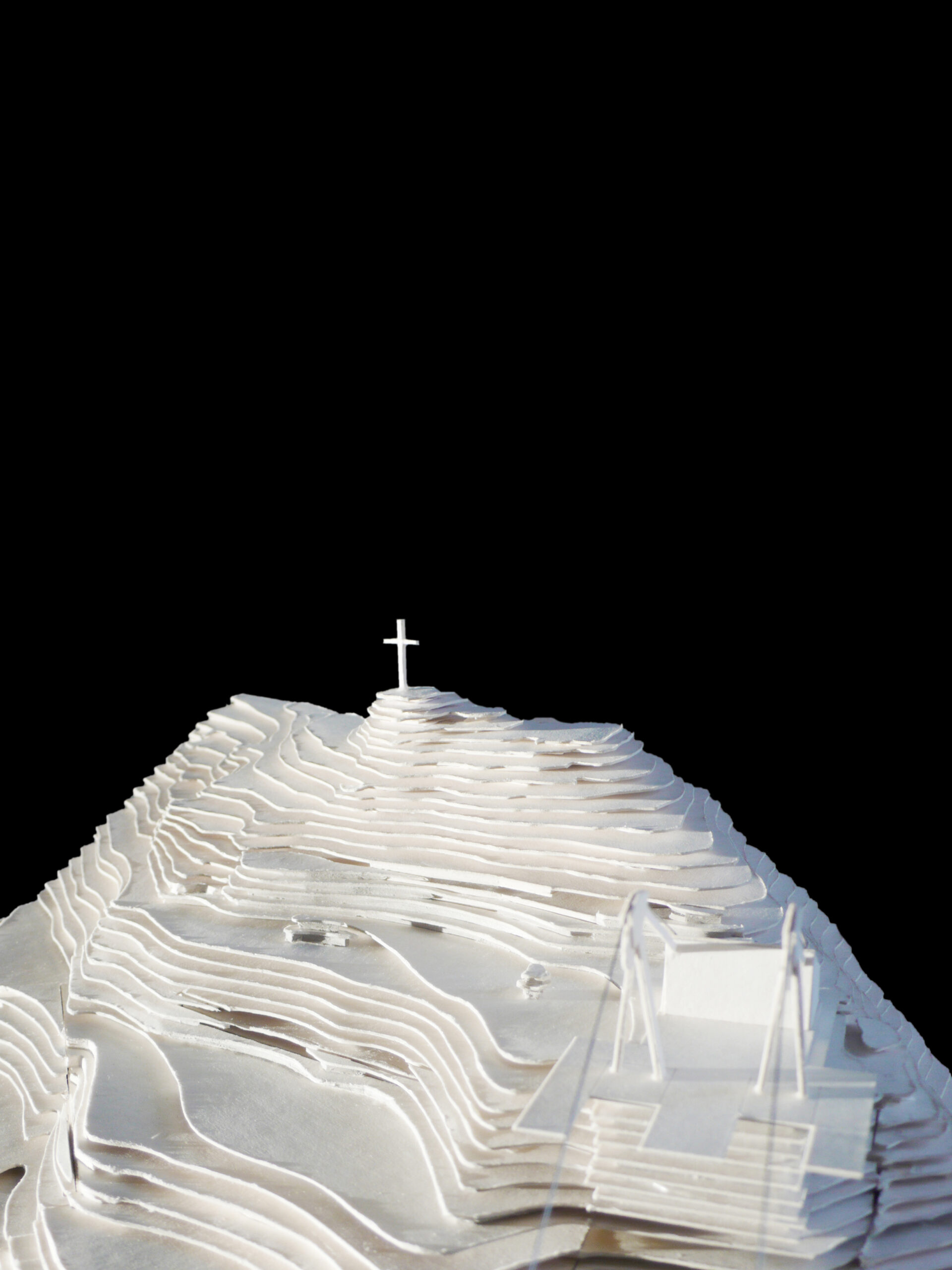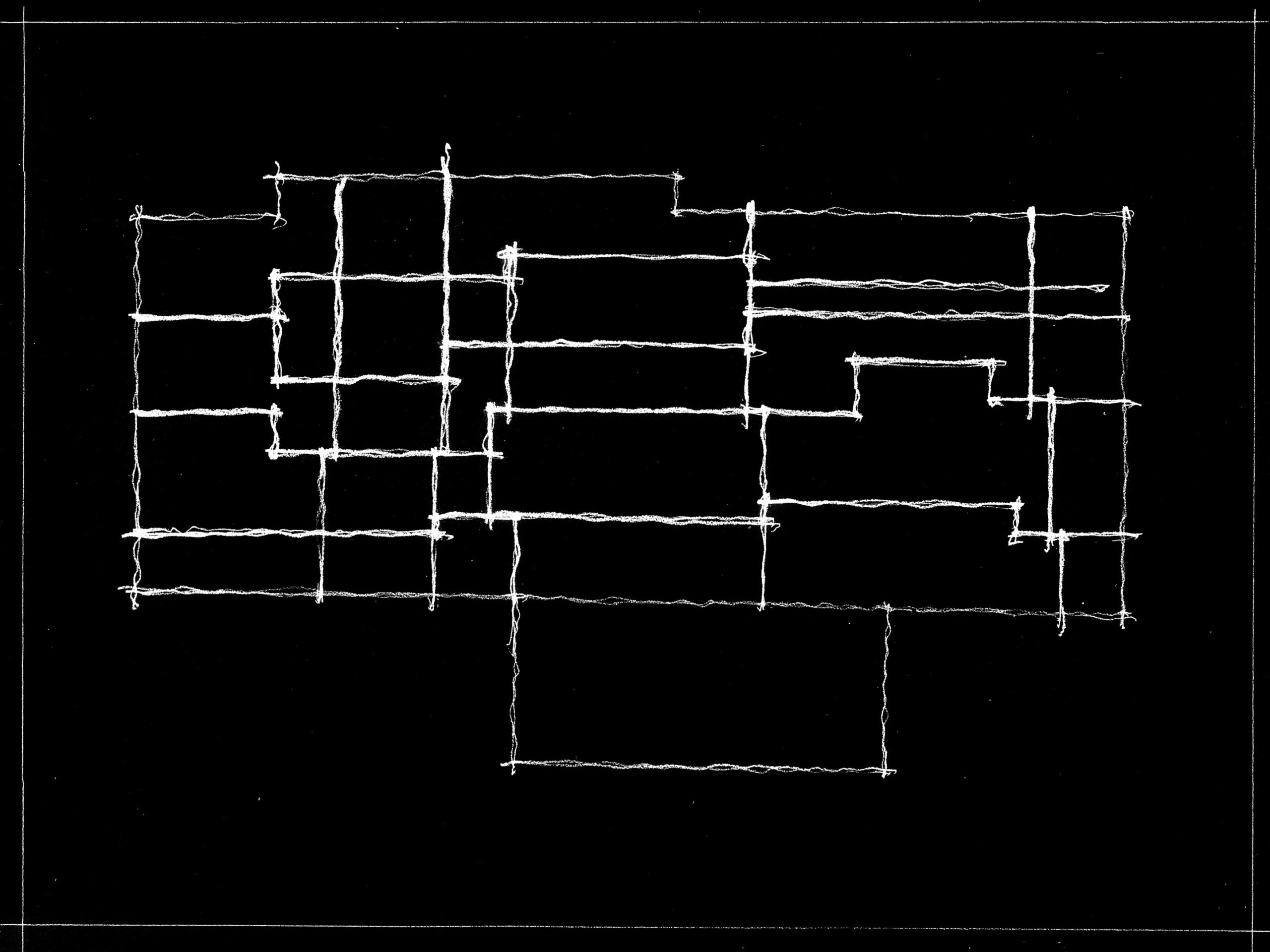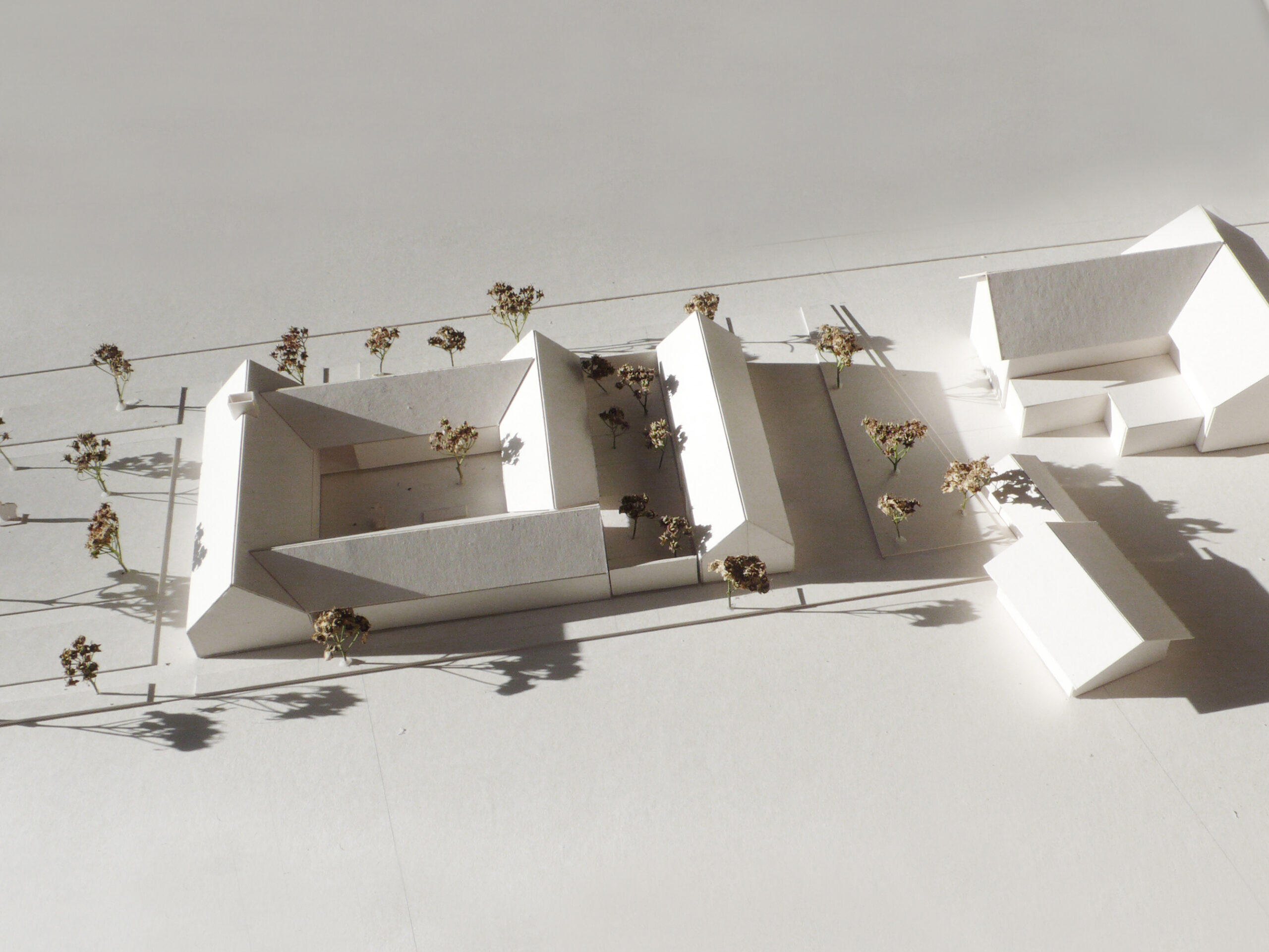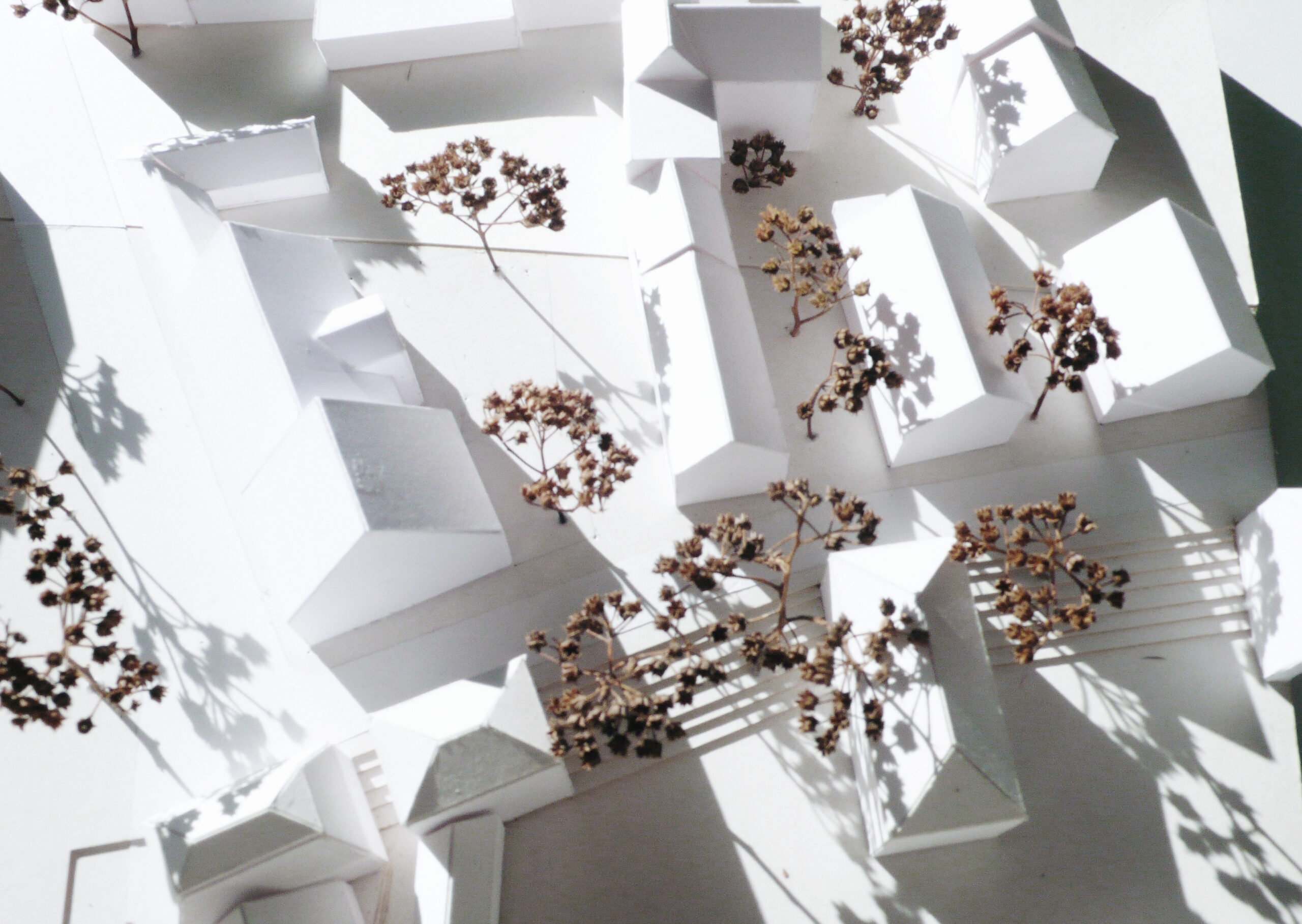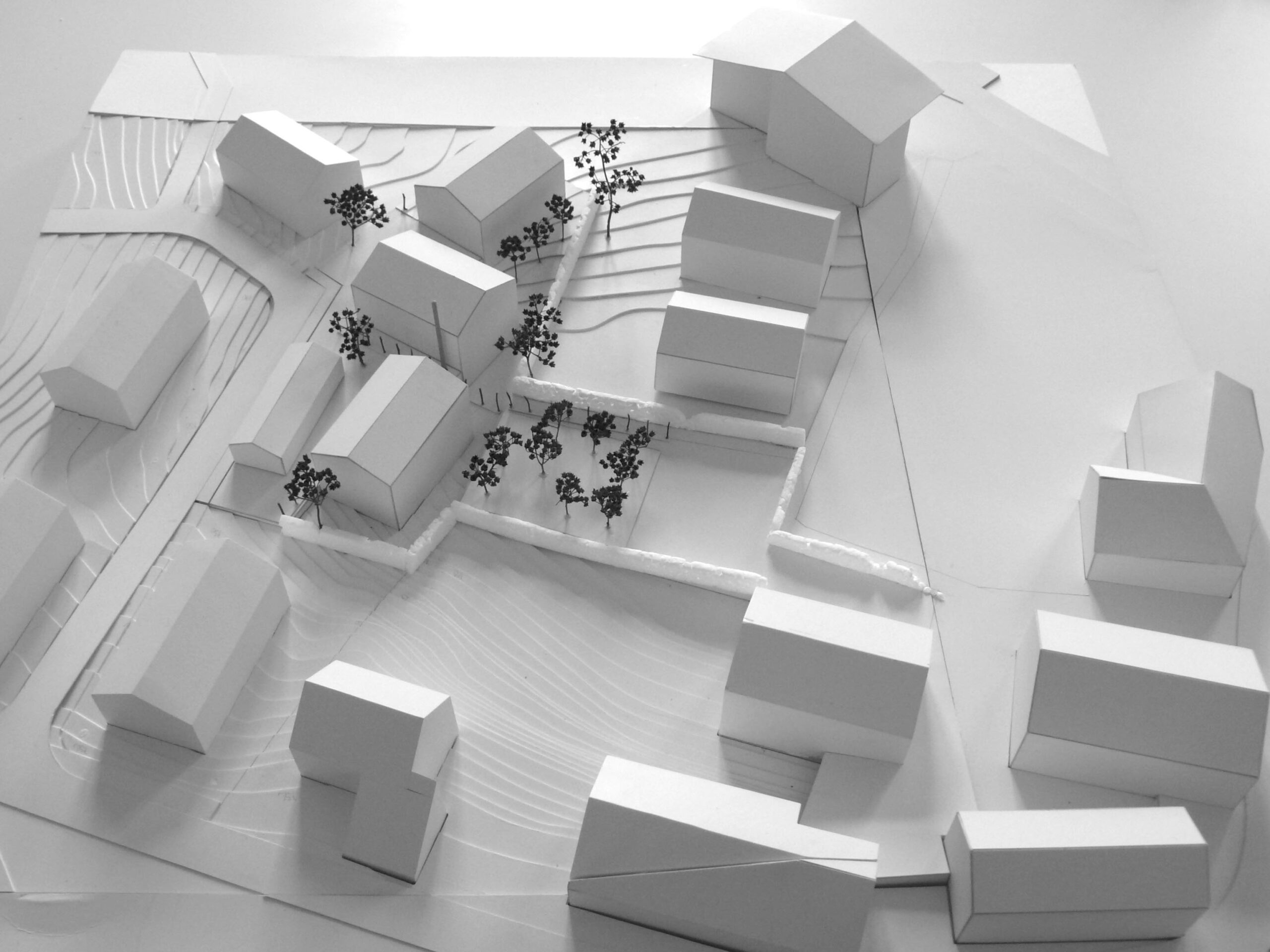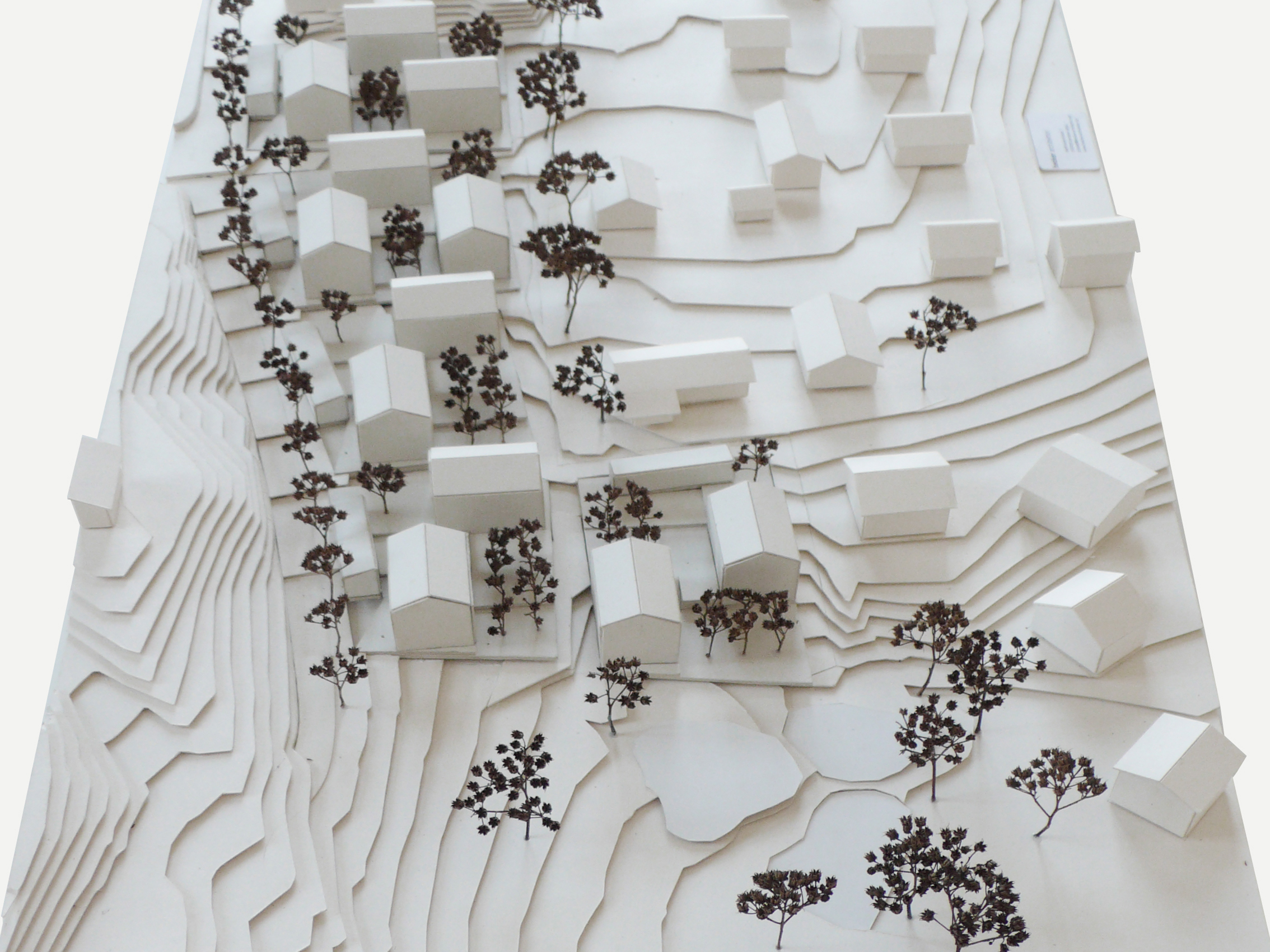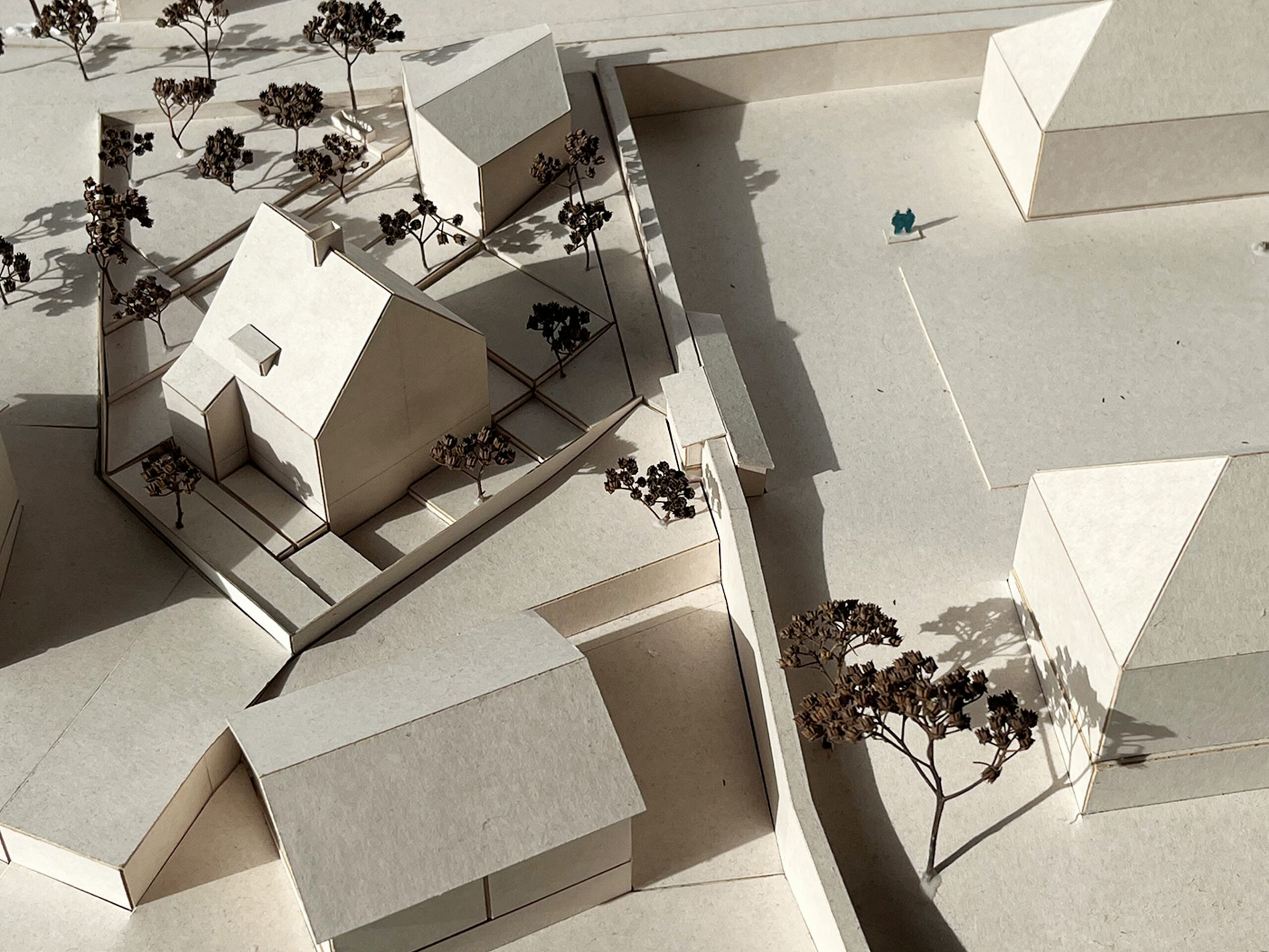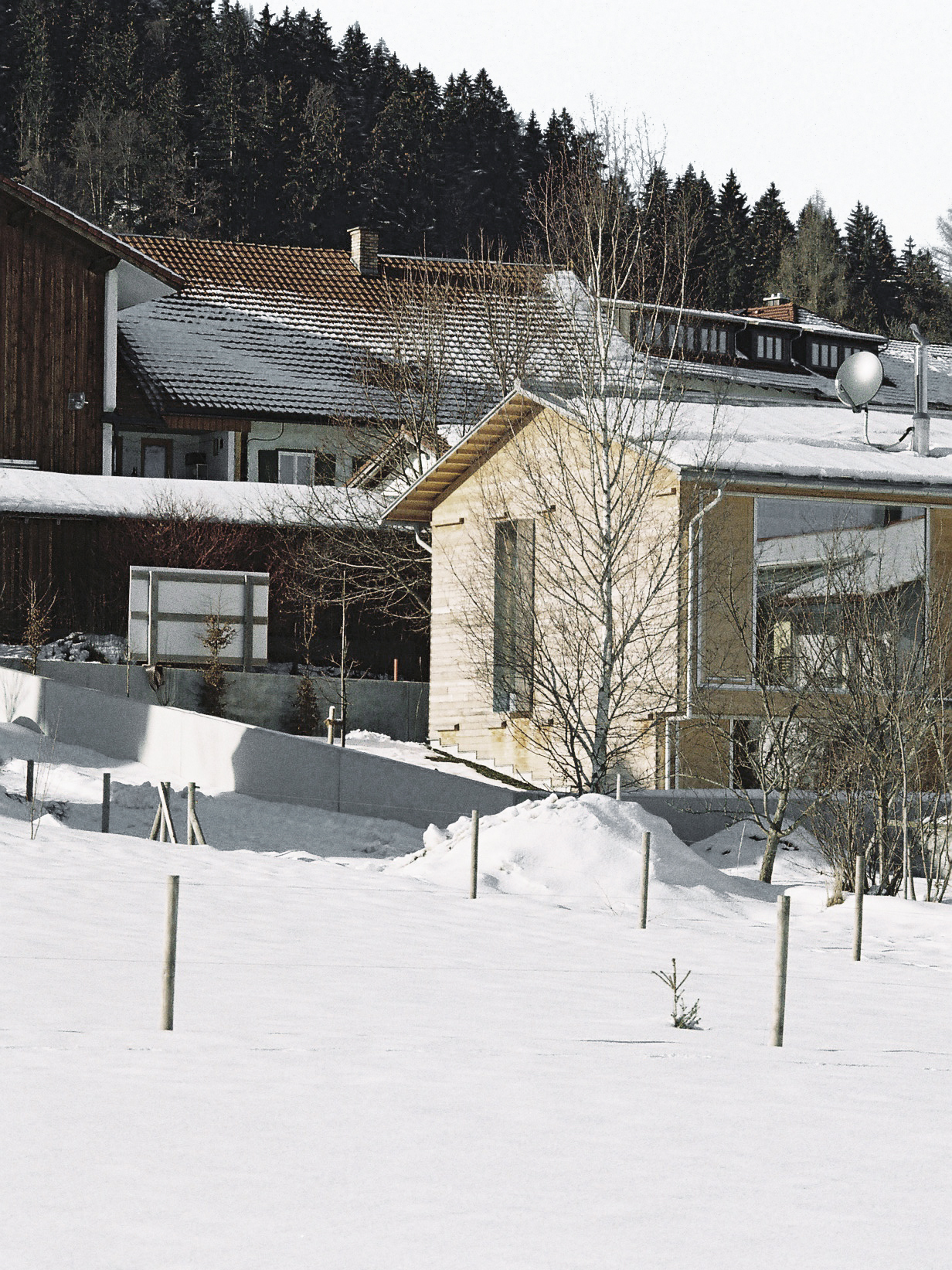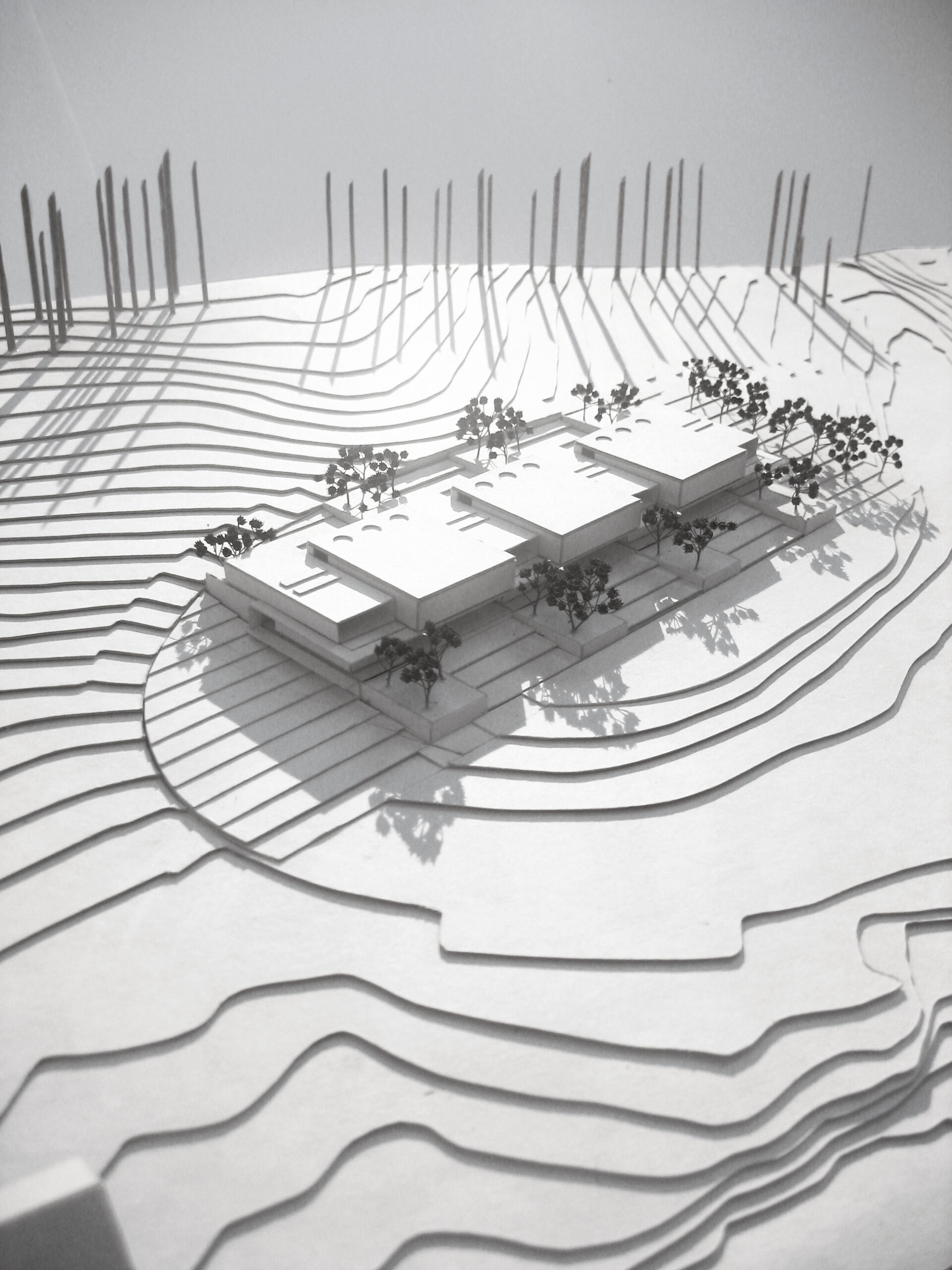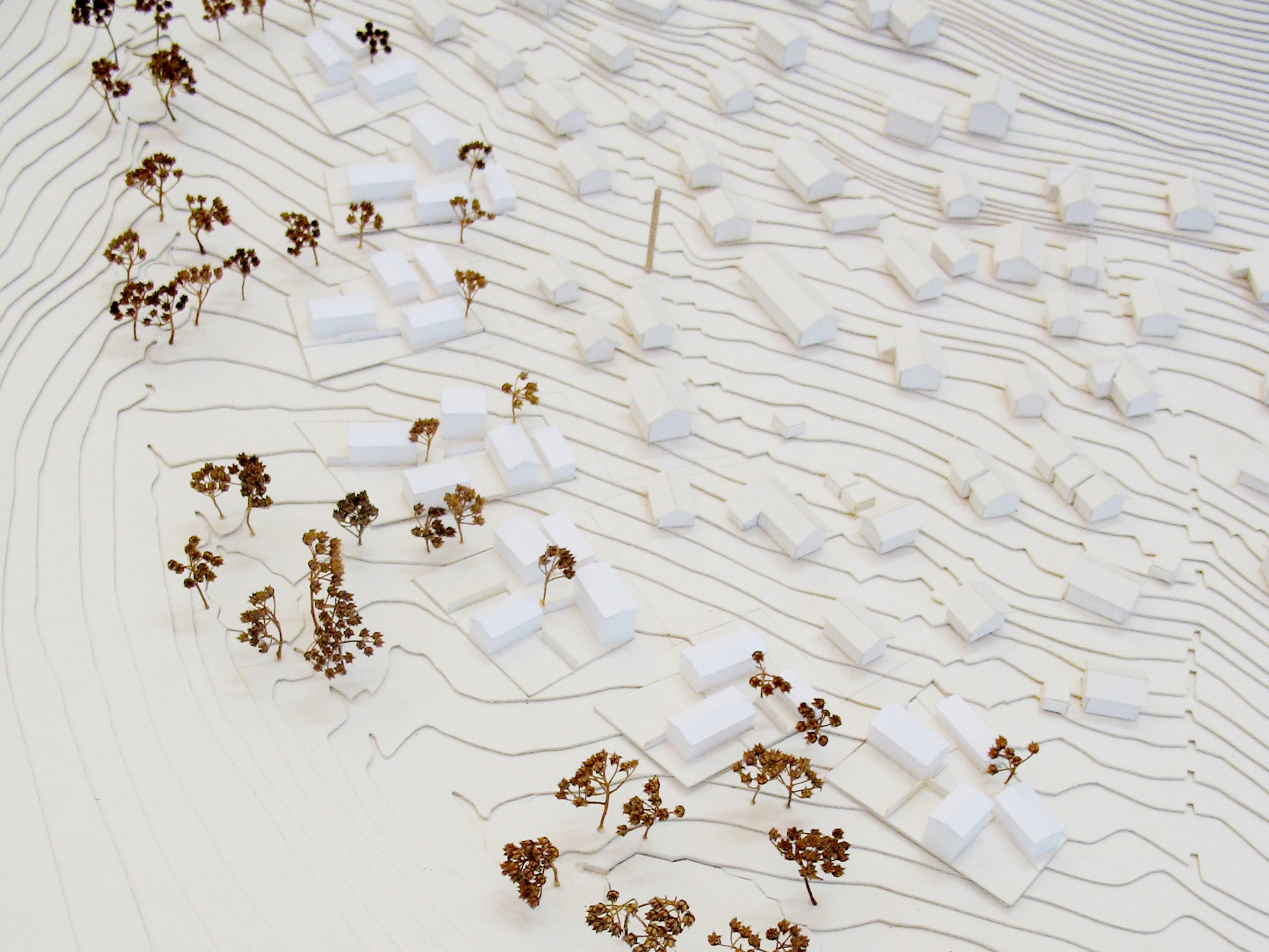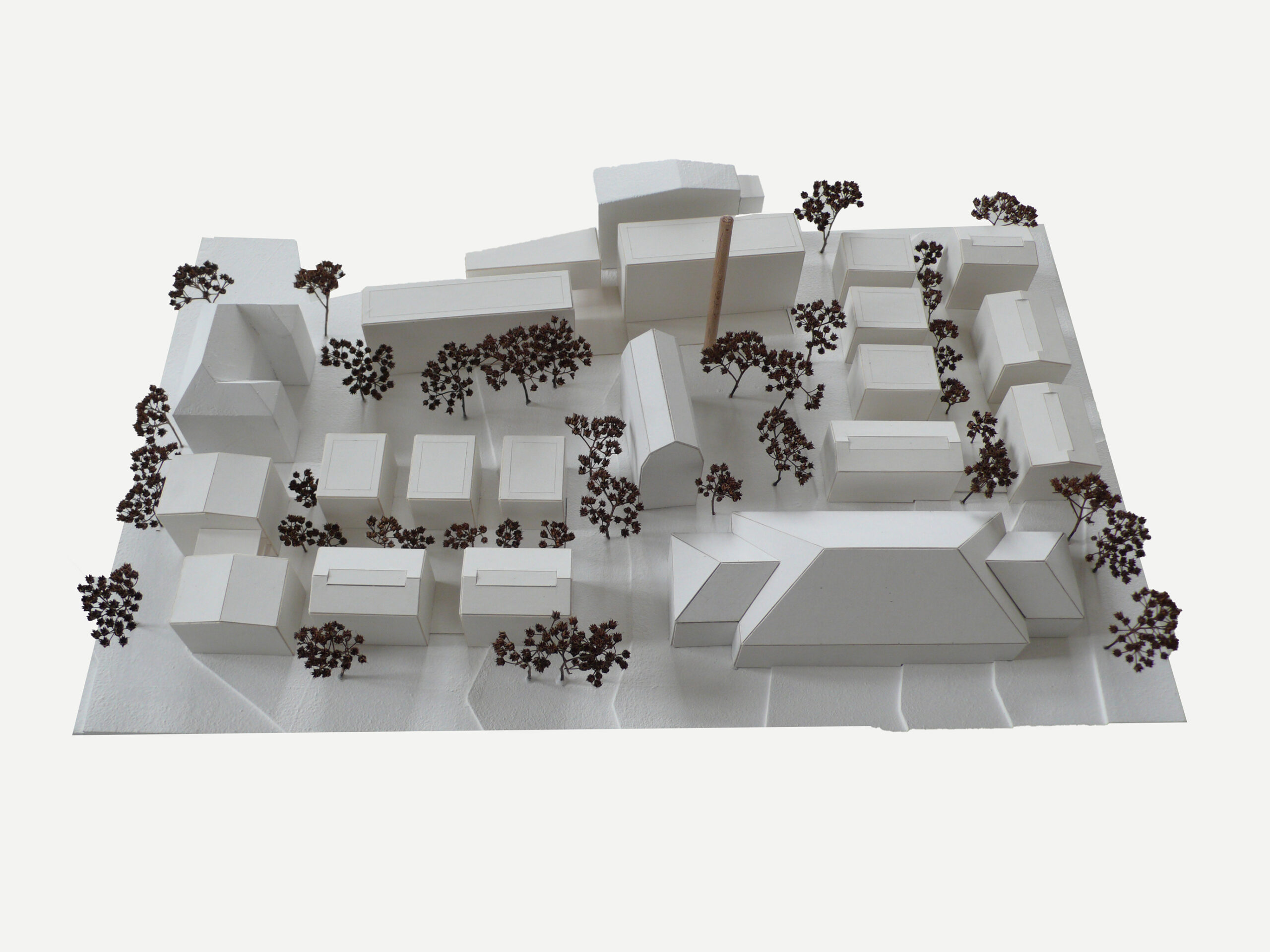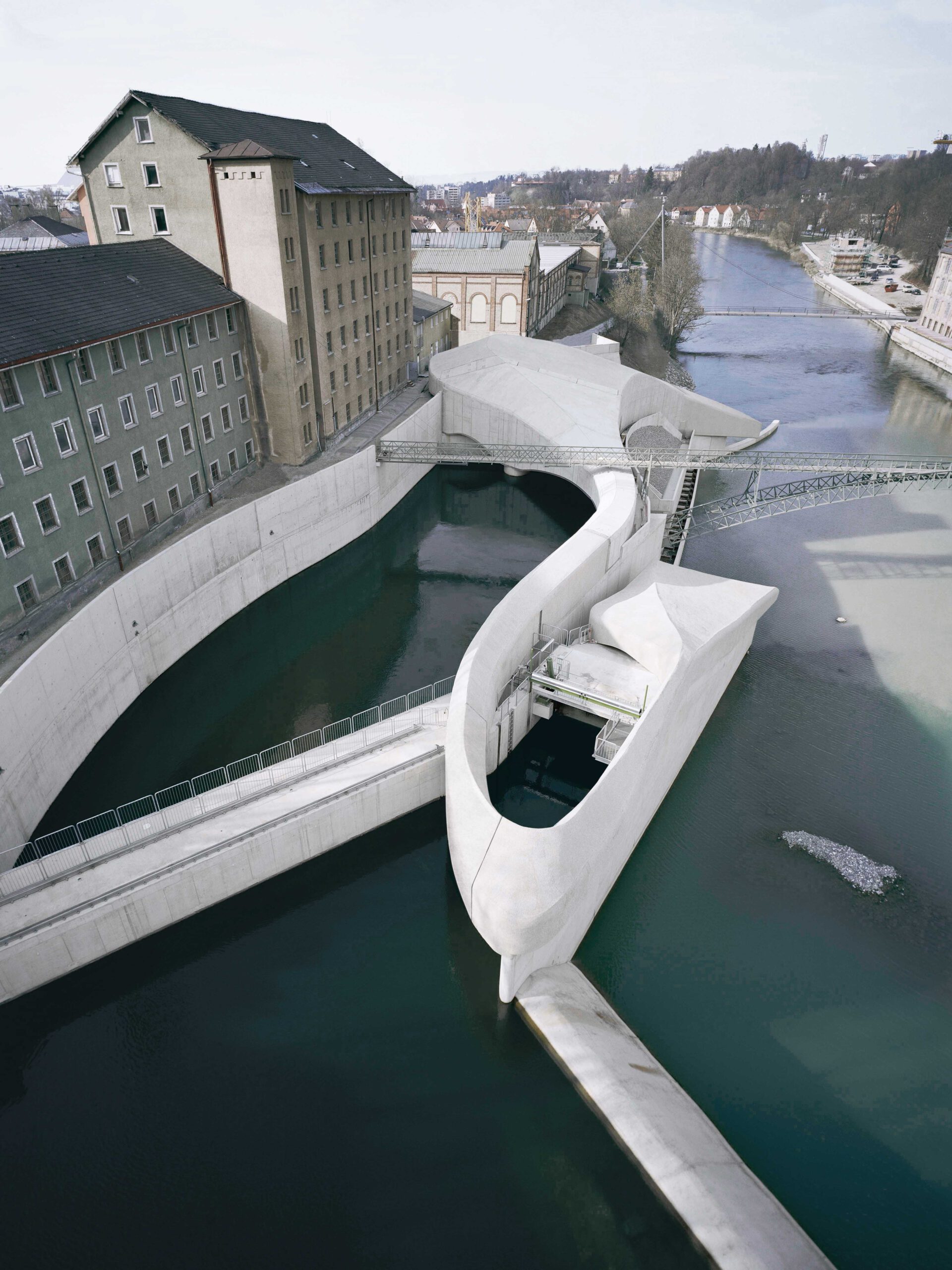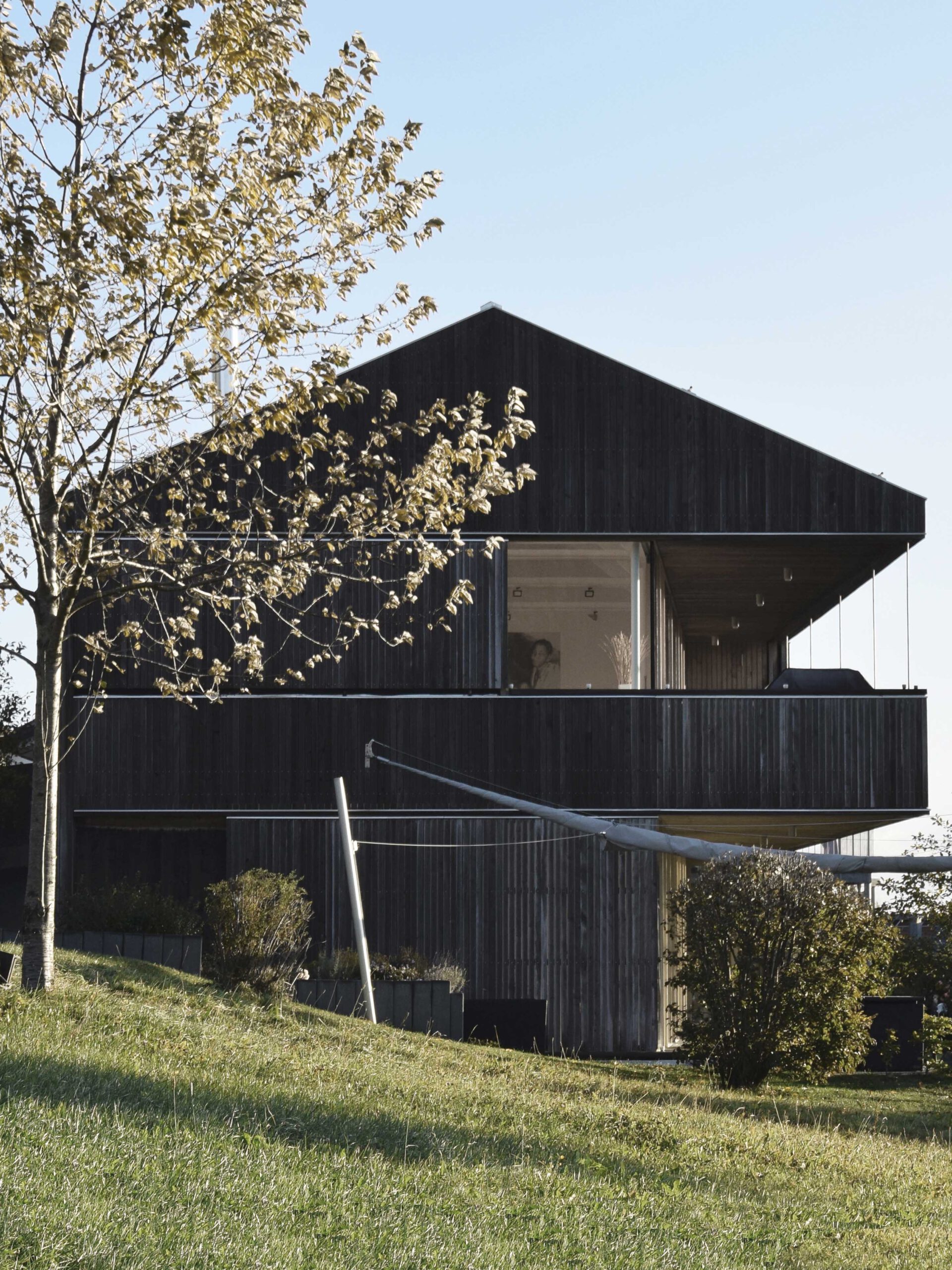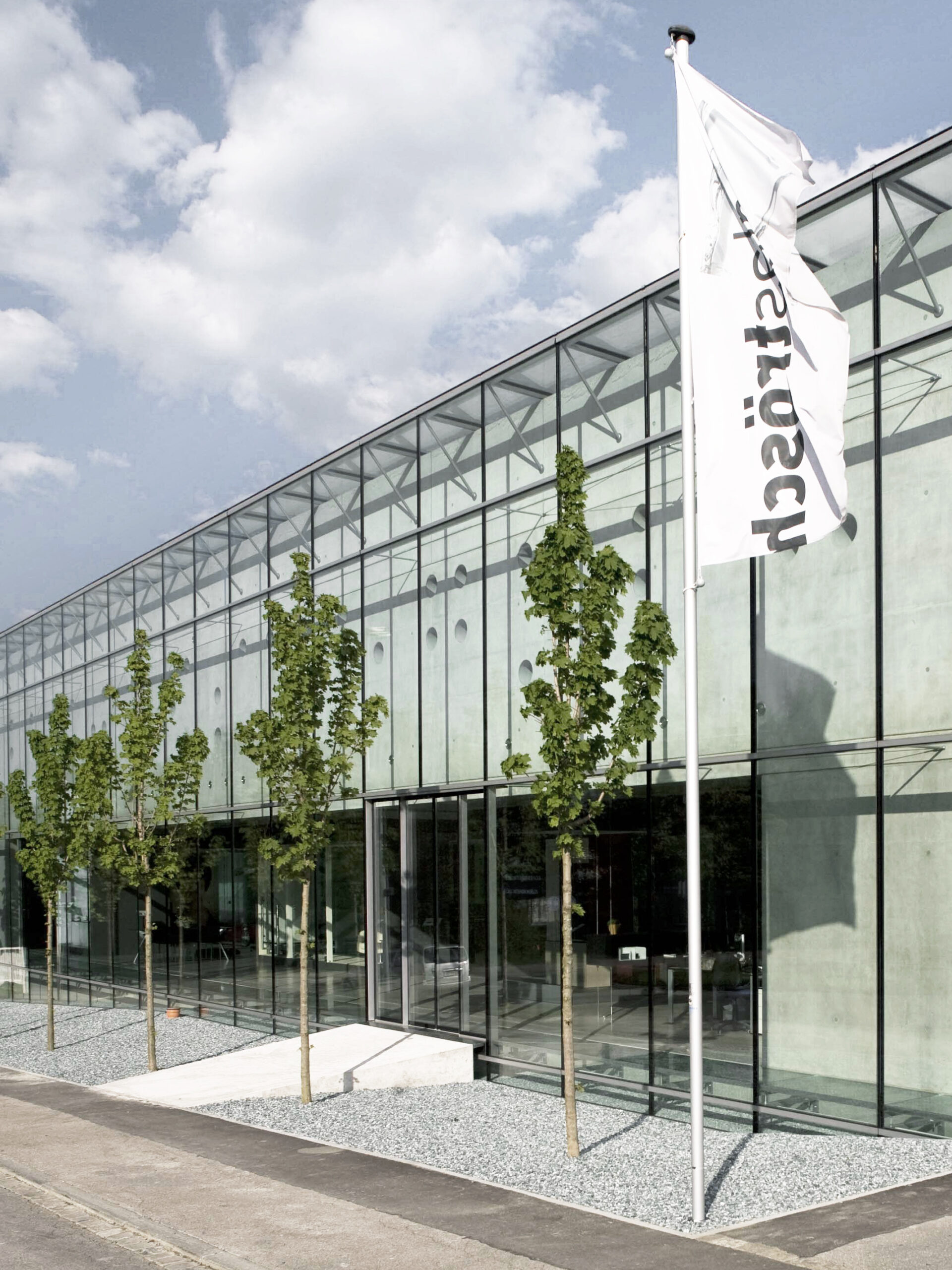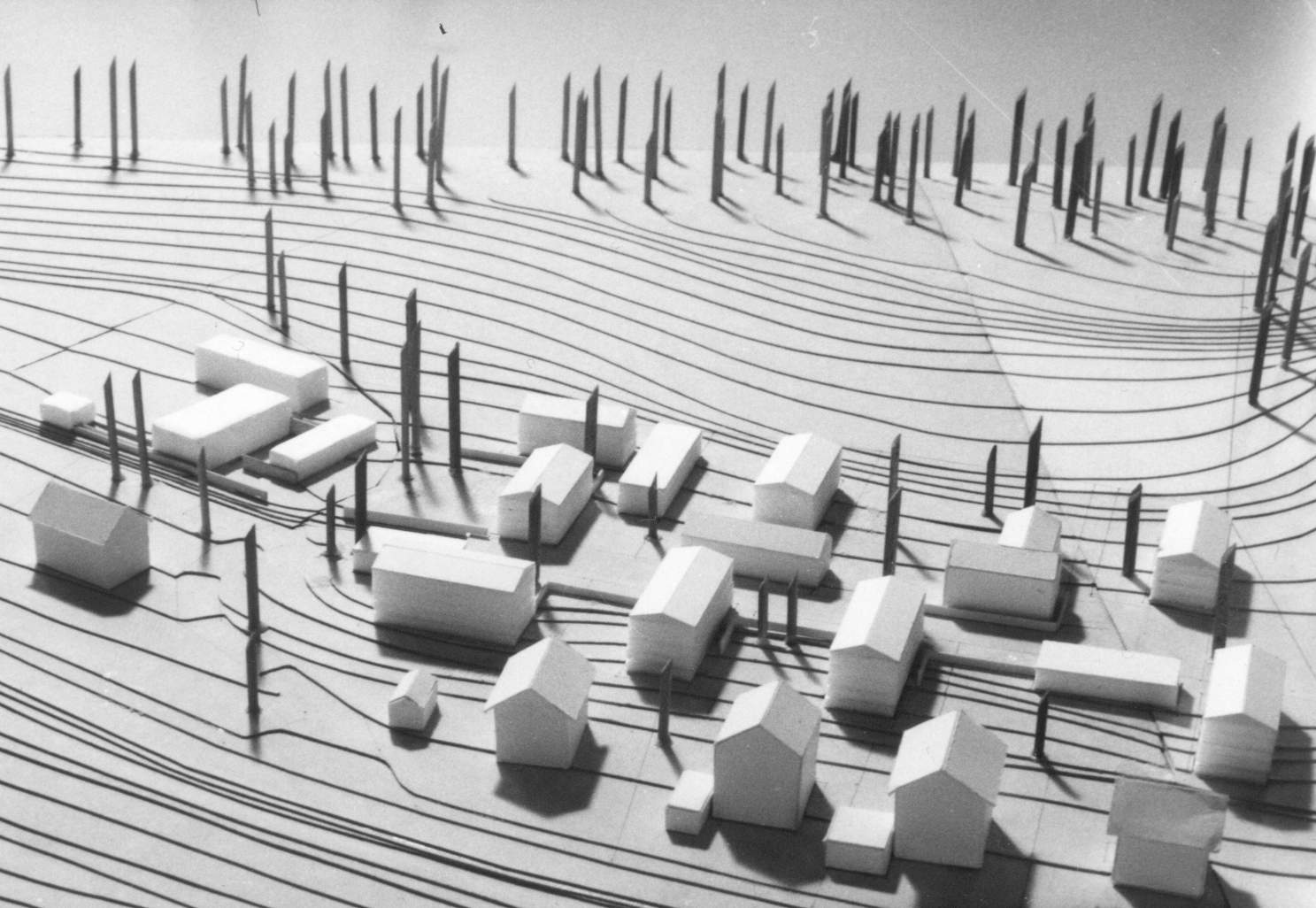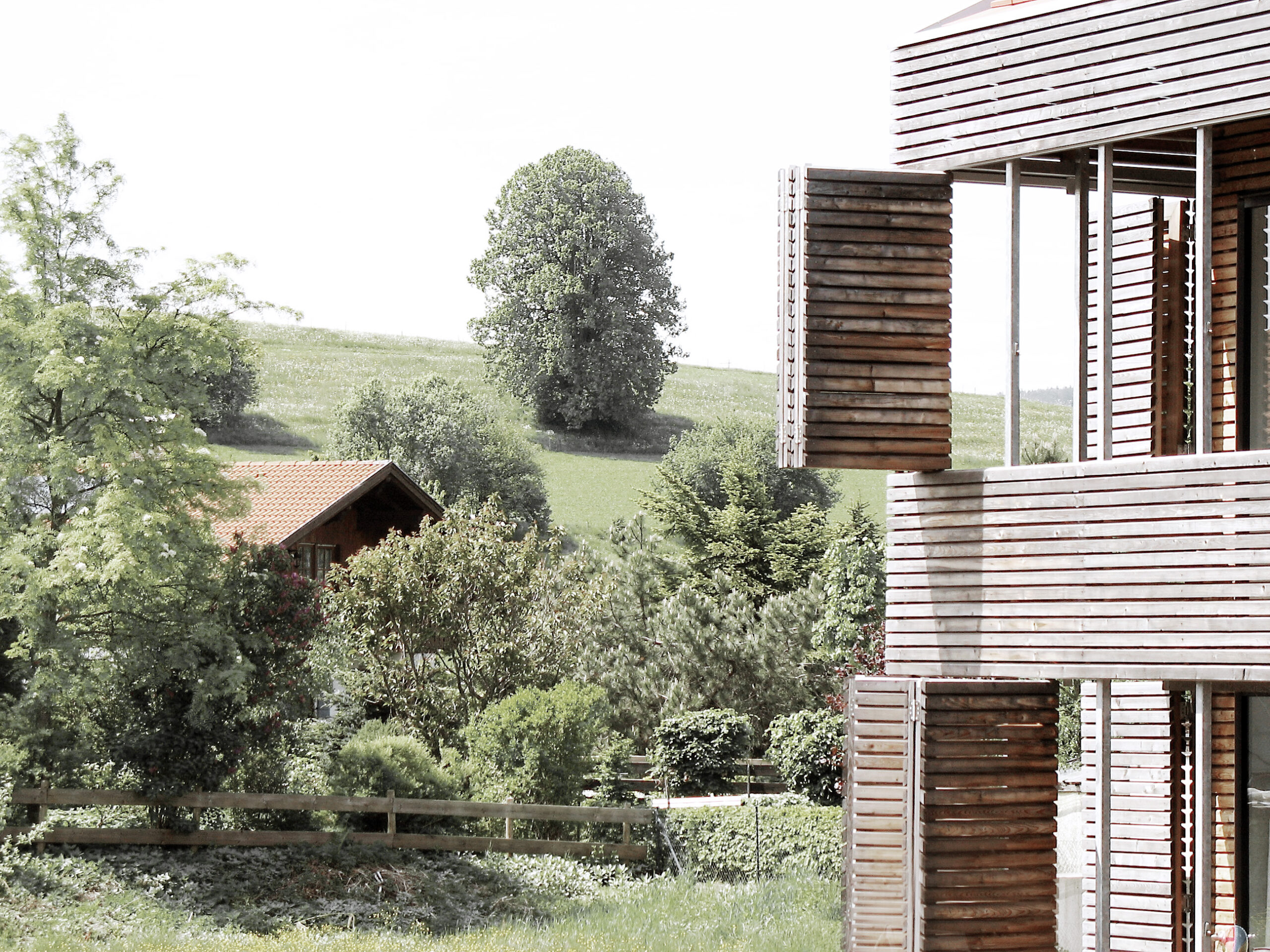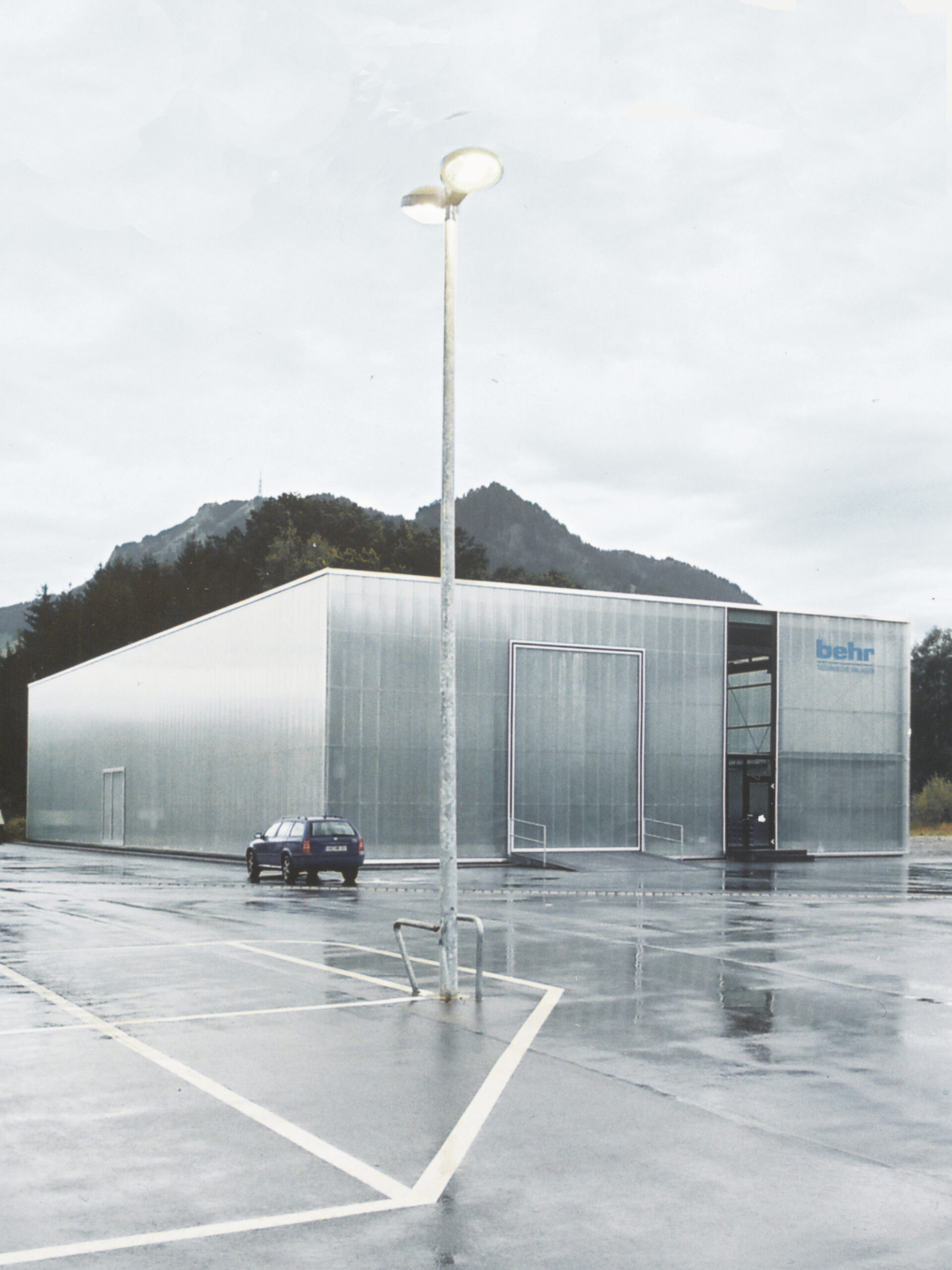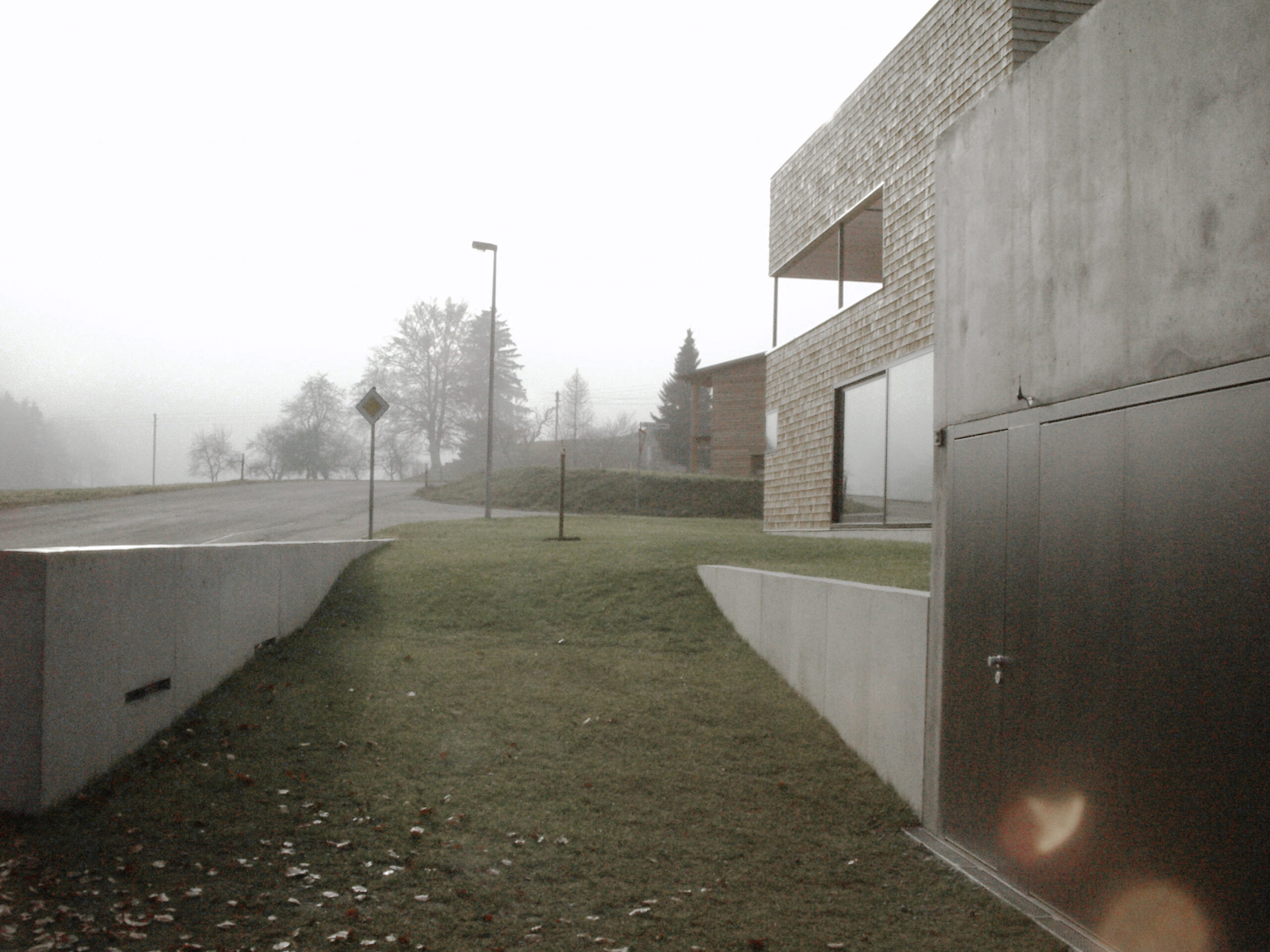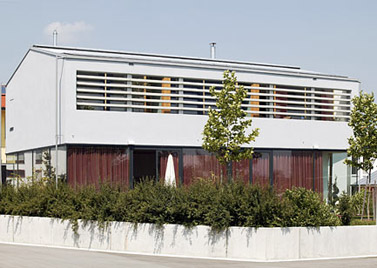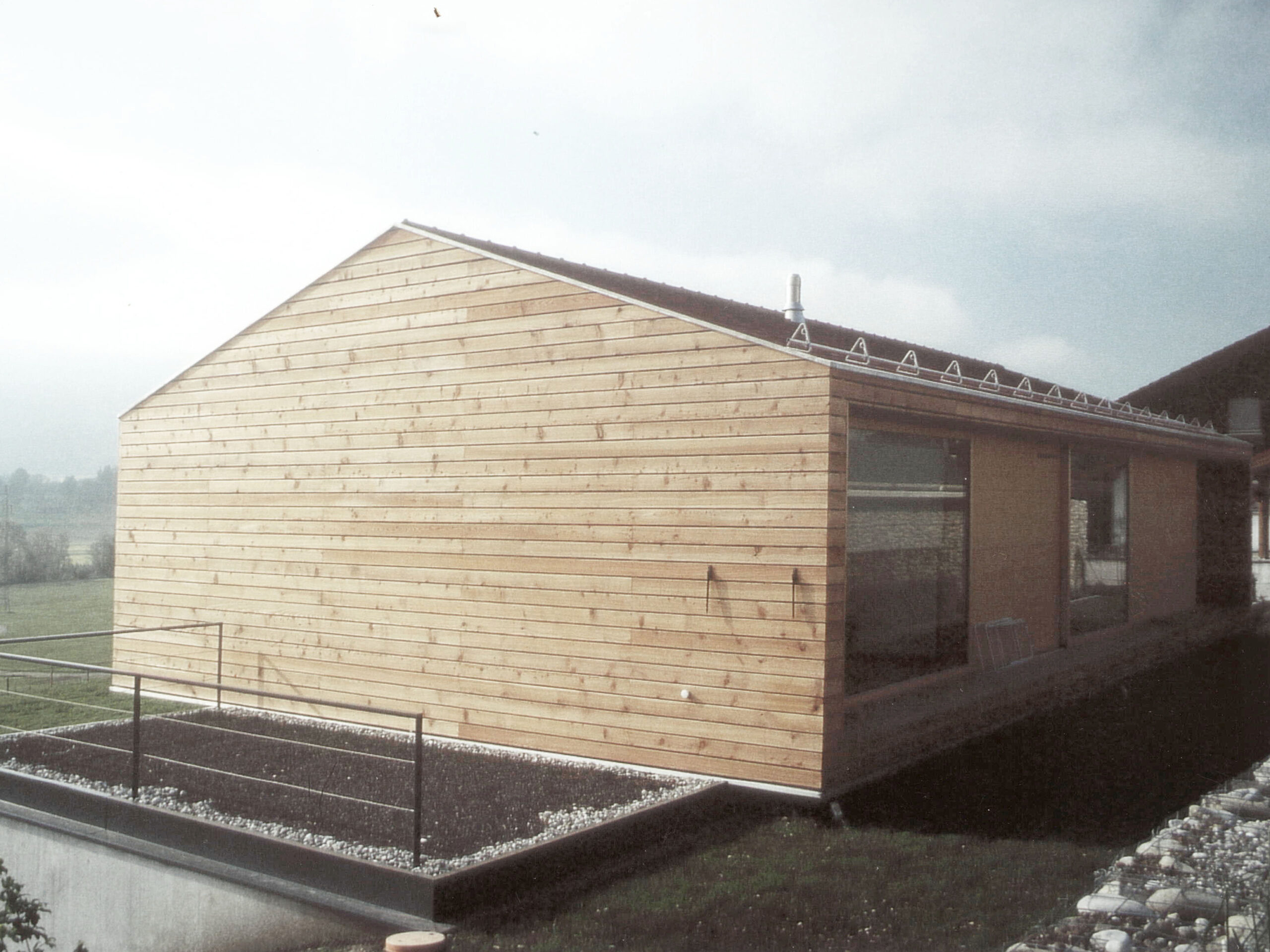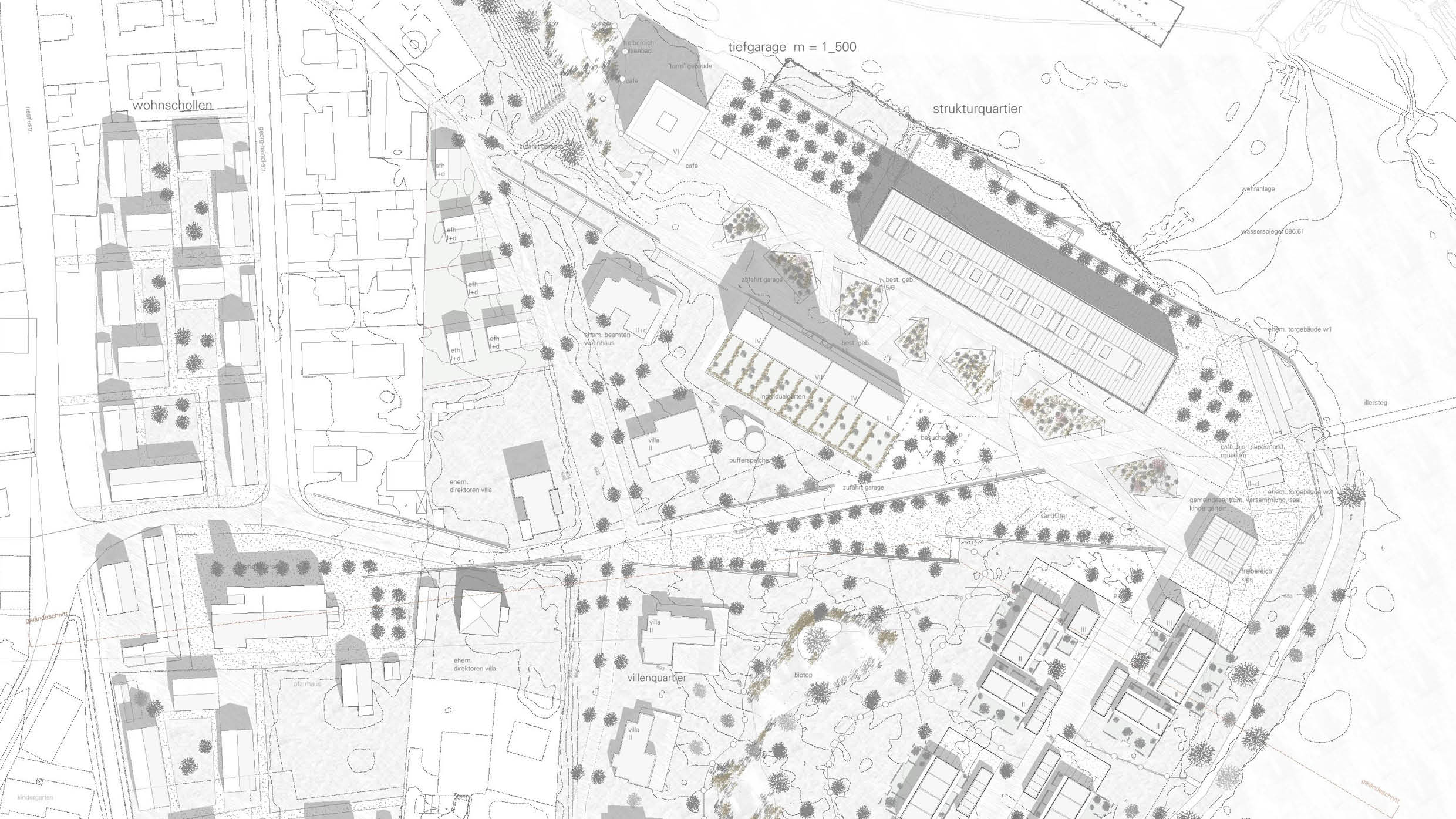
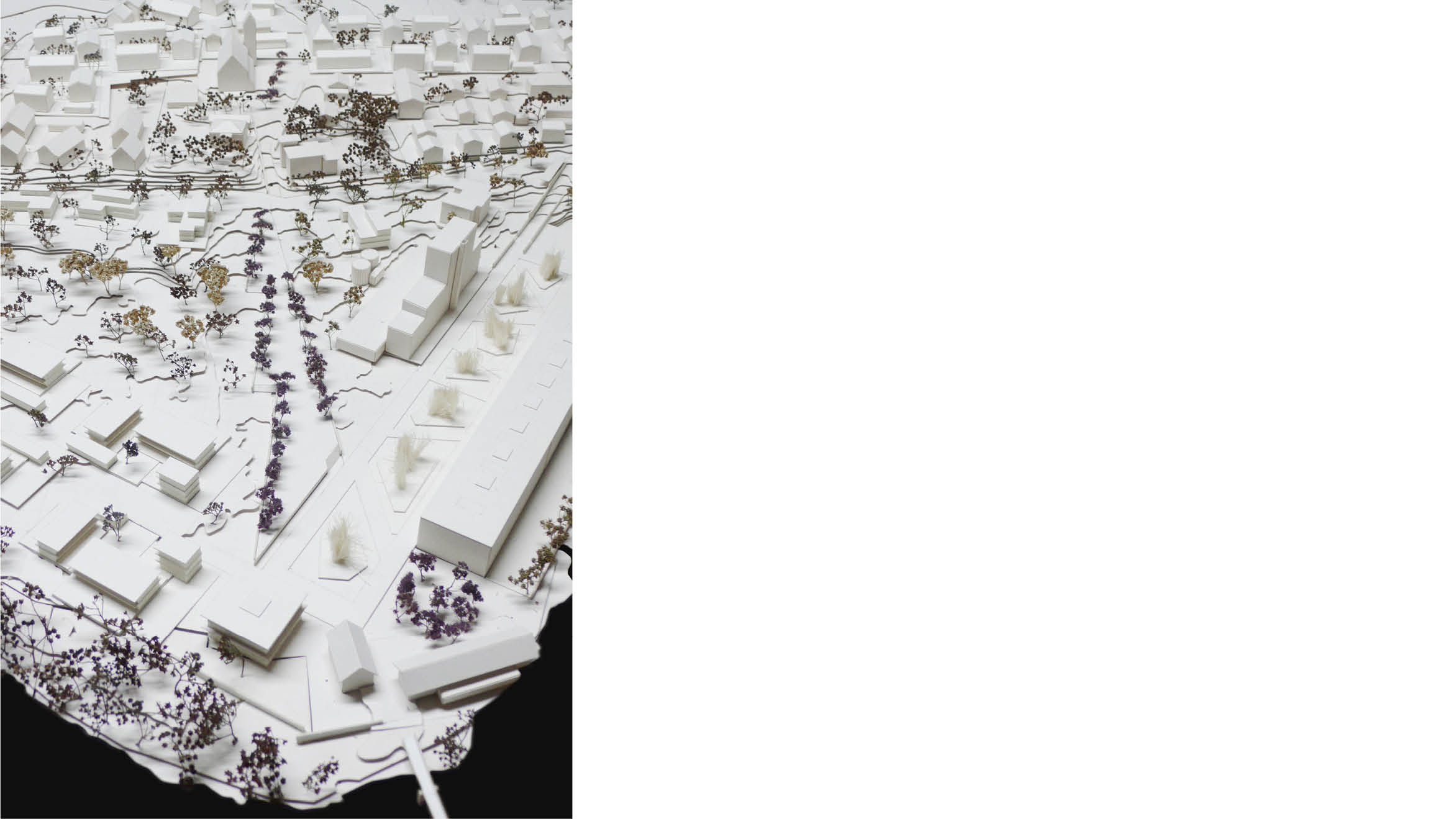

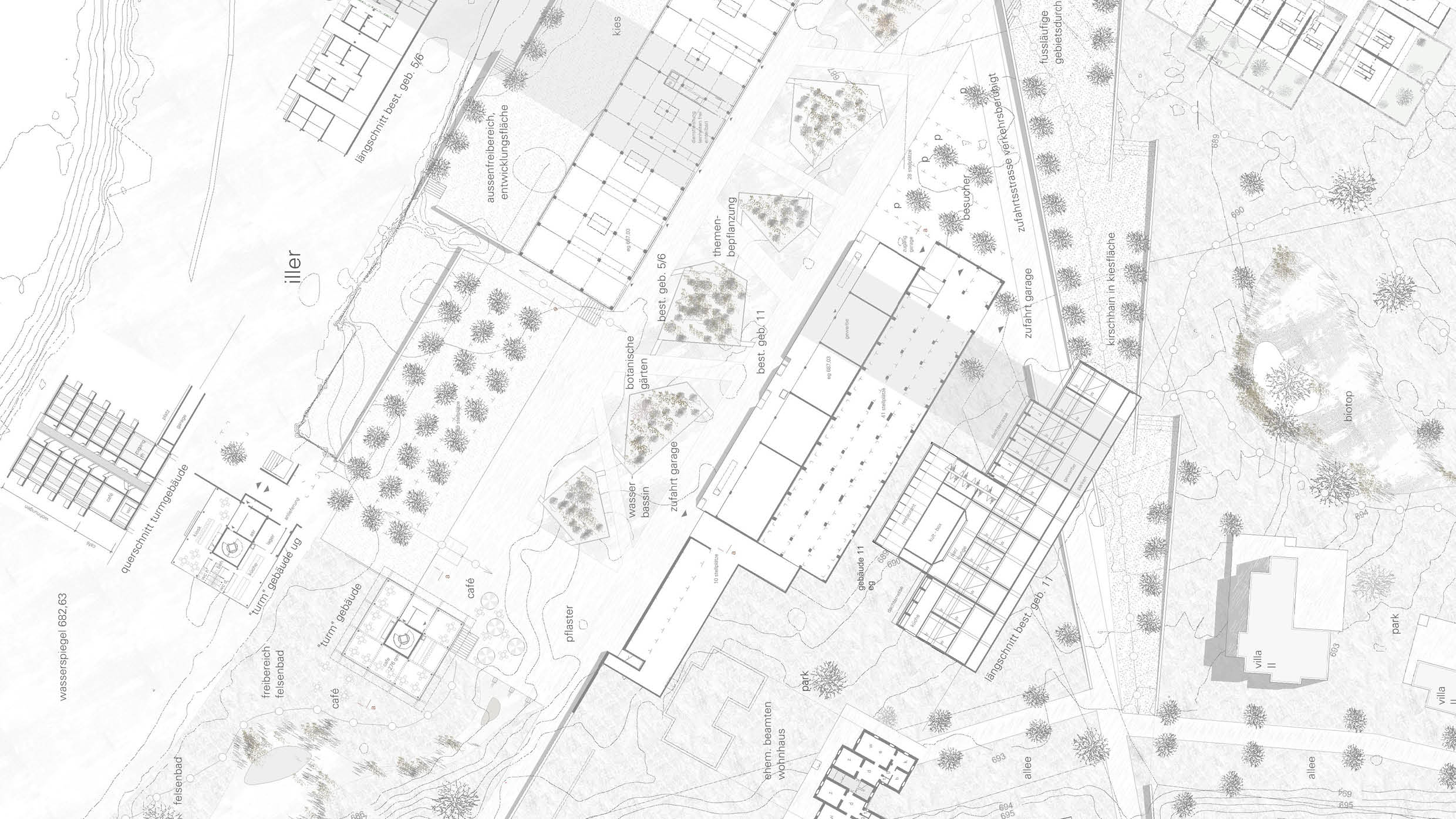

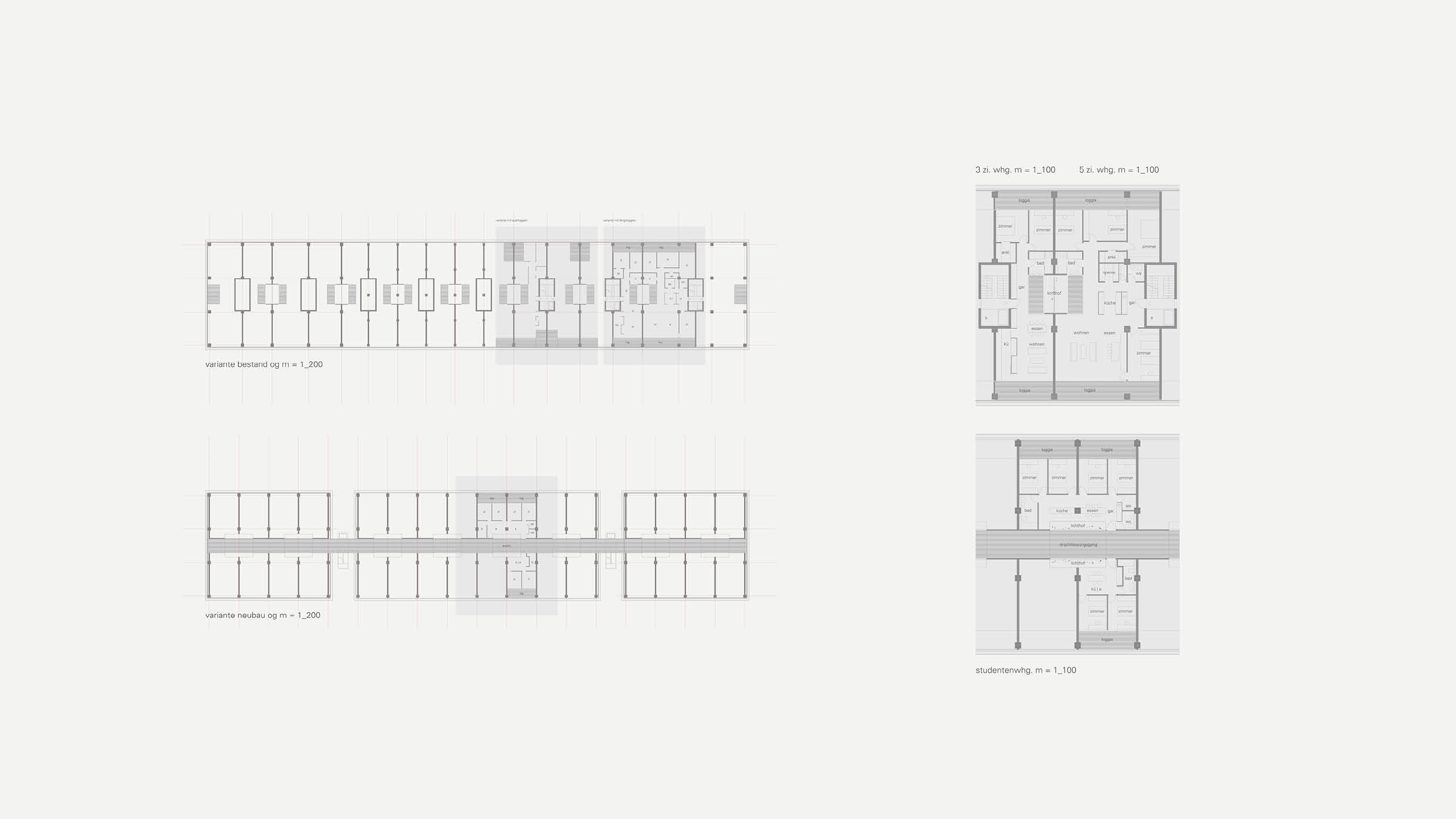
TRANSFORMATION OF THE HAINDL PAPER FACTORY SITE WALTENHOFEN
Urban development | The existing village structure is interwoven with the new quarters in terms of atmospheric, material, usage and social aspects in the sense of an overarching community. This extends to small group communities, the so-called “Schollen”.
In order to achieve this, a new square network is created and spatially connected under a holistic integrative concept, starting with the “Kirchplatz”, flanked by introverted residential clods, which are located in the existing green areas and offer green communal interior spaces. This condensed and rearranged town center is reminiscent of historic workers' housing estates and is atmospherically complemented by the “Kirschweg”, which ultimately leads to the new neighborhood square. This central reception and distribution point is marked by a wooden communal building.
A fork-shaped development extends south from the Quartiersplatz into the “Schollenquartier”, which follows the village community concept and is located between the Iller river to the east and the adjacent inland park landscape to the west. To the north, the development connects the historic “Strukturquartier”, a contemporary residential quarter with industrial charm. A water basin with floating plant islands is reminiscent of the historic course of the canal and is bordered to the north and south by precisely positioned wooden buildings and the so-called Haus 11 as a cultural and gastronomic center, which serves as a landmark visible from afar.
To the north, the new overall quarter is rounded off by the addition of individual building structures on the high plateau. A string of pearl-like villas at the foot of the embankment with direct access to the park follows the “Schollen” concept and is accessed via a north-south driveway. The historic directors' and civil servants' residences are integrated into a new, space-creating ensemble.
Structural Quarter | The beauty and rigor of the physical building structure, designed to carry heavy loads, is preserved. The atmospheric density of the industrial monument is preserved while serving as a backdrop for contemporary life. New façades envelop the structures to meet the atmospheric and technical requirements of the new use.
Schollenquartier | A bulkhead building based on the industrial system is anchored collectively on floes situated in the park area, with direct access to the park and the Iller floodplains. At the same time, the greatest possible privacy is maintained, both inside and in the individually limited outdoor area.
Apartment building, community building | Structuralism in wood as an atmospheric and haptic material contrasts with the industrial surfaces of concrete and steel. The apartment building expands like a treetop in the rising storeys at the foot of the embankment of the Illerauen area, closing off the “structural quarter” to the north and creating a windmill-like layering of the community building with hall and daycare/kindergarten use. In terms of layout and façade language, it structurally connects the historic industrial buildings with the new “Schollenwohnbauten”.
Individual villas | Pedestal villas with direct access to the park continue the classic modernist style. These heavily grounded structures form a new sequence as the northern end of the park and at the same time as a prominent prelude to the quarter, embedded in the ensemble of the former directors' and civil servants' houses, which are situated like gates.
Ecological concept | A central district energy supply through groundwater use combined with photovoltaic and solar energy use acts as a “green heart”. The recultivated, contaminated and structurally sealed areas are enhanced by green roofs and building cores. An inner park space as an identity-forming “green lung” with a natural and abstract sequence of watercourses offers local recreation areas and supports the integrative overall design concept.
Development and stationary traffic | The star-shaped development of the moving traffic with targeted parking facilities utilizes the topographically suitable existing industrial structures. This is supplemented by a new underground parking solution below the “structural quarter square”, all with daylight and natural ventilation. Open-air parking spaces at strategically favorable locations serve short-term parkers, while the quarter remains free of traffic and offers a high quality of stay.
To the south, in the area of the “Schollenquartier”, there are dug-in open-air parking spaces directly assigned to the “Schollen”. Visitor parking spaces in the residential streets and side buildings as covered small parking garages structure the sequence of streets and squares. A multi-layered network of footpaths connects the “Kirchplatz” with the “Schollenwegenetz” of the “Wohnschollen” via the elevated “Kirschweg”, which serves as a place to stay and linger. There is a direct connection to the “Weiherrundweg”, the Illerauen and the public Iller cycle path as well as to the “Gemeinschaftsplatz” or “Strukturquartiersplatz”, which forms a dense, identity-forming network system.
TOPIC:
Transformation Of A Industrial Wasteland
LOCATION:
Waltenhofen, DE
YEAR:
2013
CLIENT:
Privater Investor
TYPOLOGY:
Commercial | Urban Design
STATUS:
Competition, 1st Price
TEAM:
Michael Becker, Markus Wolfertshofer, Franz Schröck
PLANNING TEAM:
Konstruktionsgruppe Bauen AG, Kempten
IB Hirdina, Kempten
MODELLING:
Becker Architects Planners
WORKS
No.155 | 2023.
School for Timber and Design Garmisch-Partenkirchen
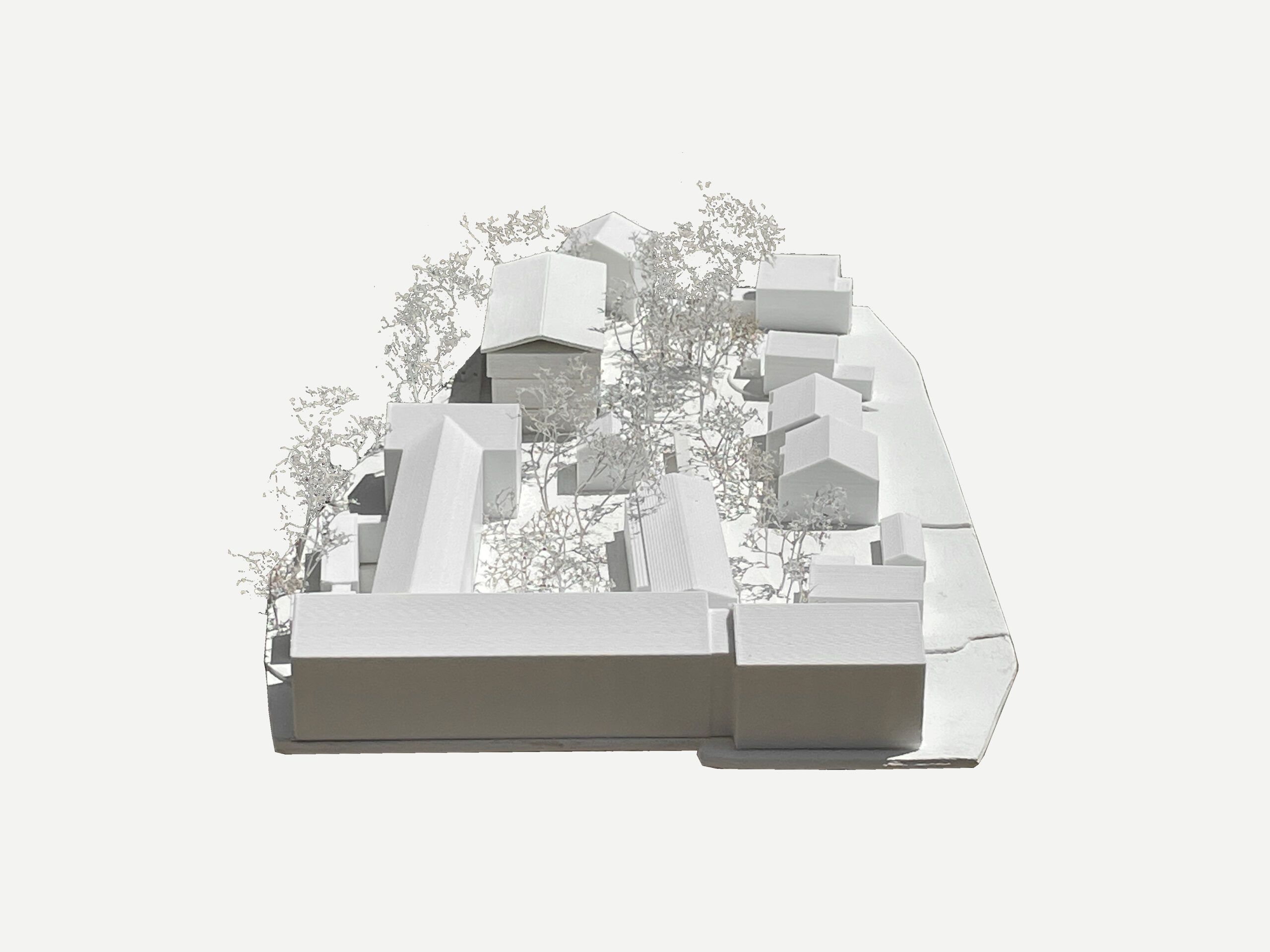
No.132 | 2016
Development Plan Mindelheim Tractor Museum
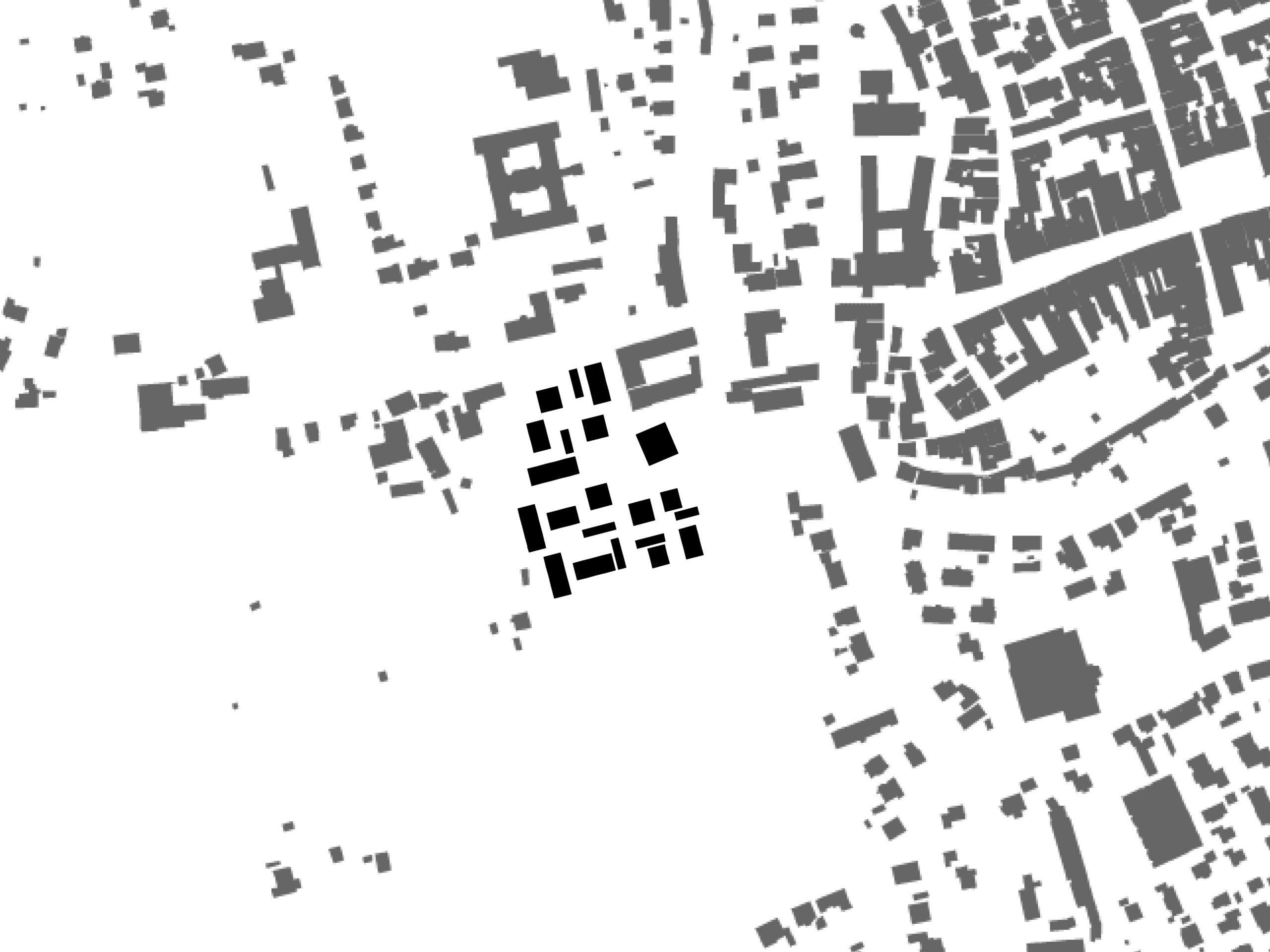
No.119 | 2014
Development Plan of Hospital Kempten

No.111 | 2013.
Transformation Of The Haindl Paper Factory Site Waltenhofen
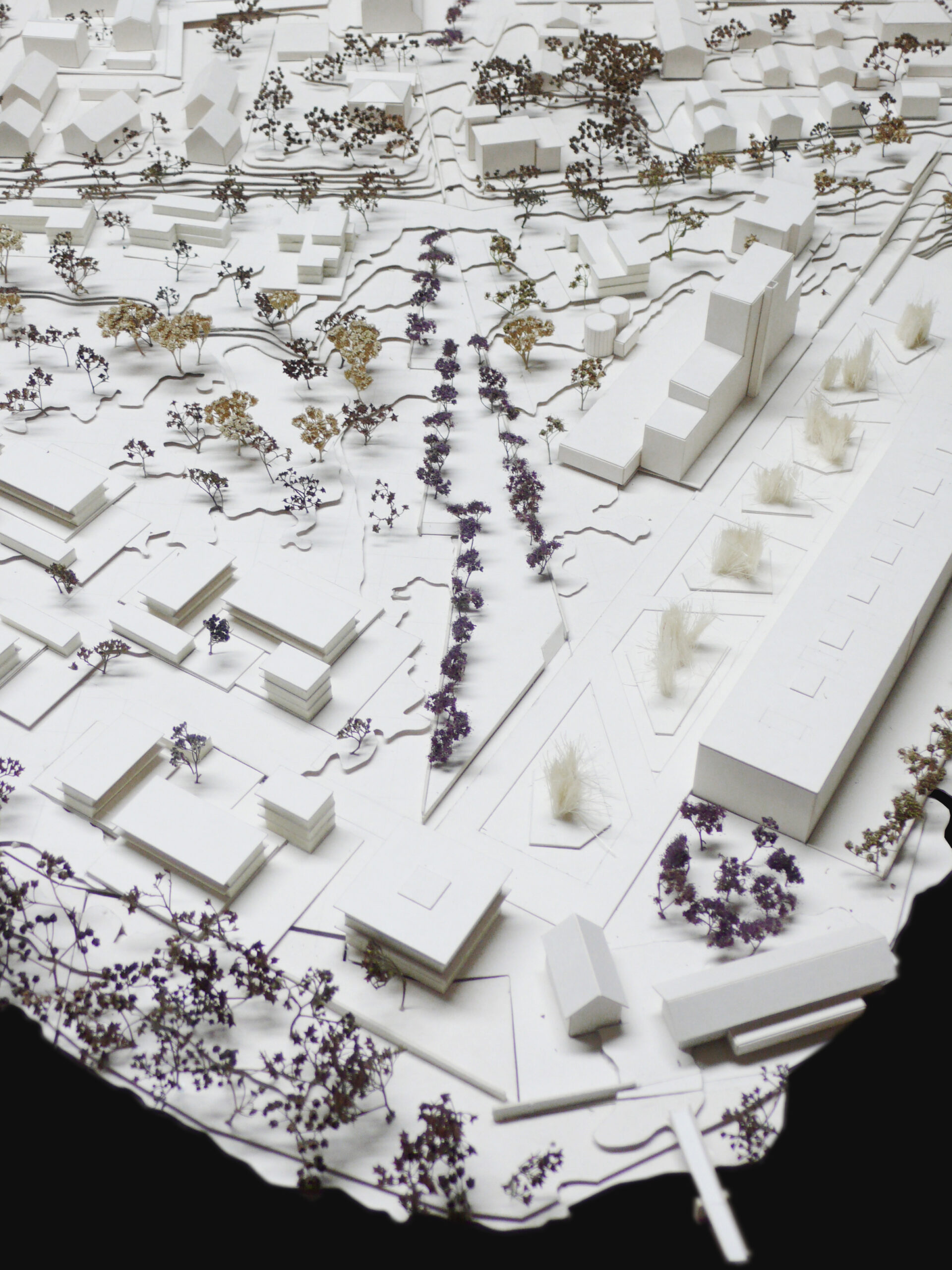
No.102 | 2012
IFEN Walmendinger Horn Cable Car Station
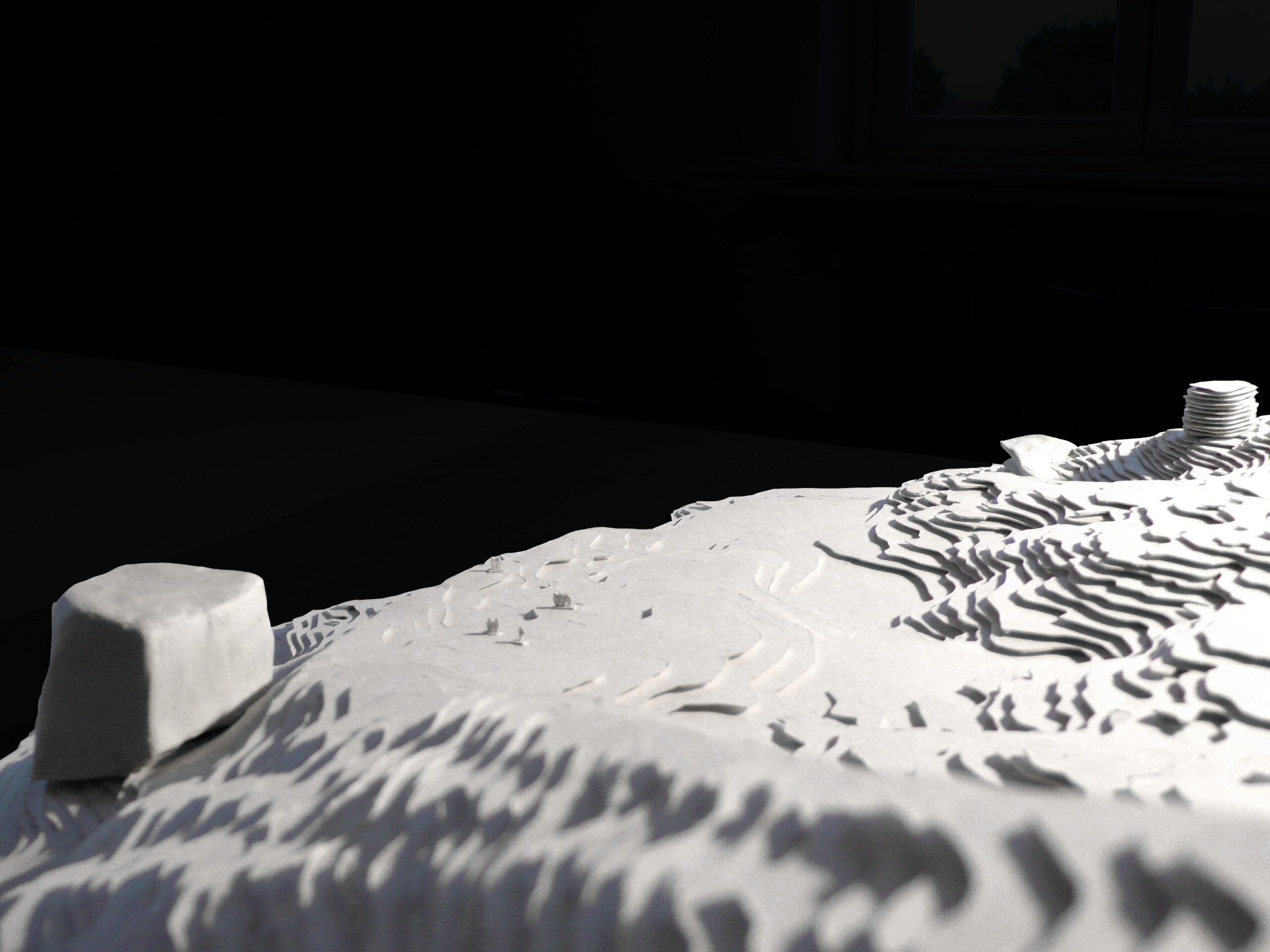
CONTACT
STUDIO KEMPTEN
Keselstraße 14
87435 Kempten. Allgäu
P.: +49.831.745 8998.0
F.: +49.831.745 8998.9
General: kontakt@becker-architekten.net
Career | Press: info@beckerarchitects.eu
SOCIAL MEDIA
LEGAL
BECKER ARCHITECTS PLANNERS BDA ©2024




